
FREE HEALTHY LIVING HEALTHY PLANET FINDING CALM DURING TRYING TIMES November 2022 | Columbia Edition | ColumbiaNaturalAwakenings.com ‘FOREVER CHEMICALS’ FACE RISING OPPOSITION GUT HEALTH AND YOUR MOOD A GRATEFUL HEART IS GOOD MEDICINE
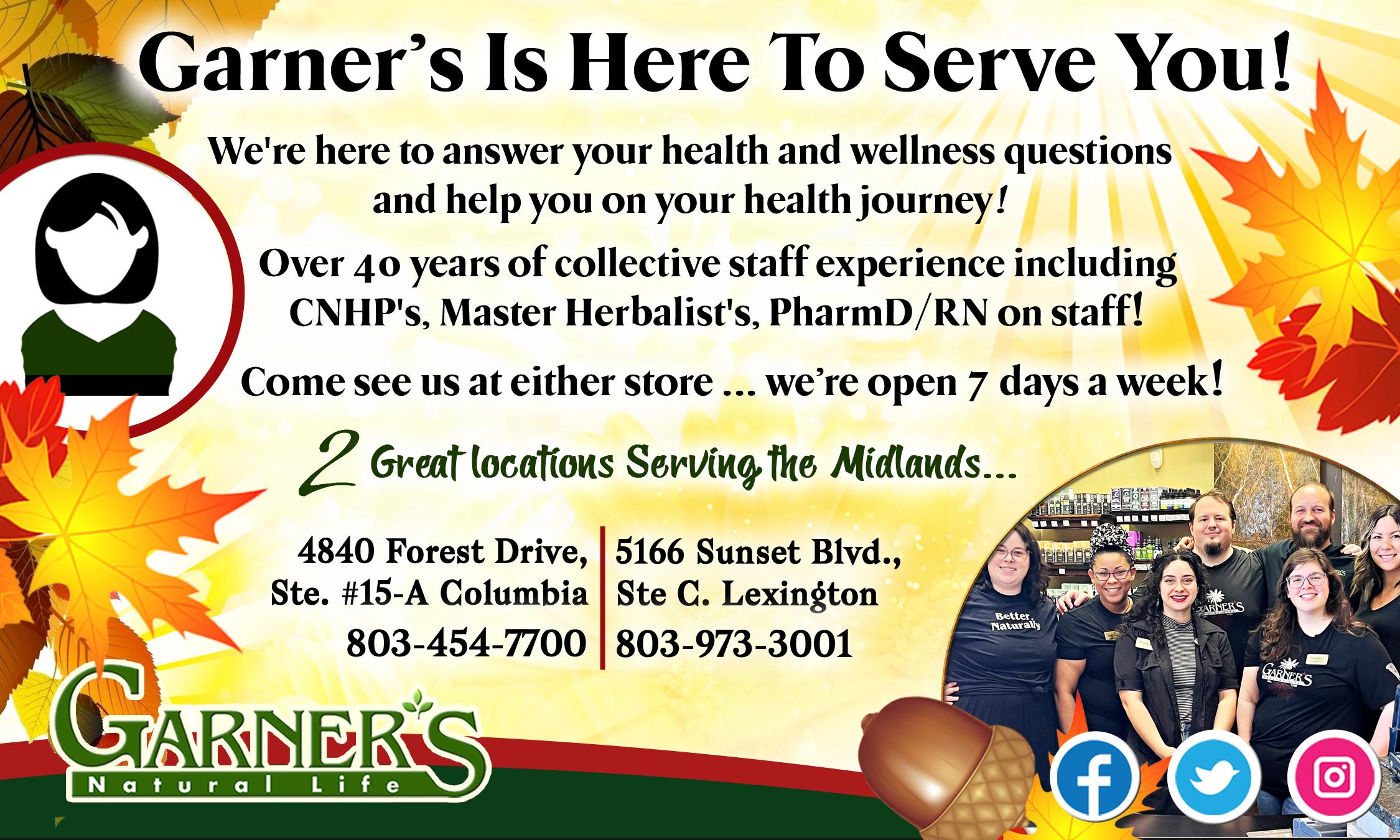

2 Columbia Edition ColumbiaNaturalAwakenings.com


3November 2022
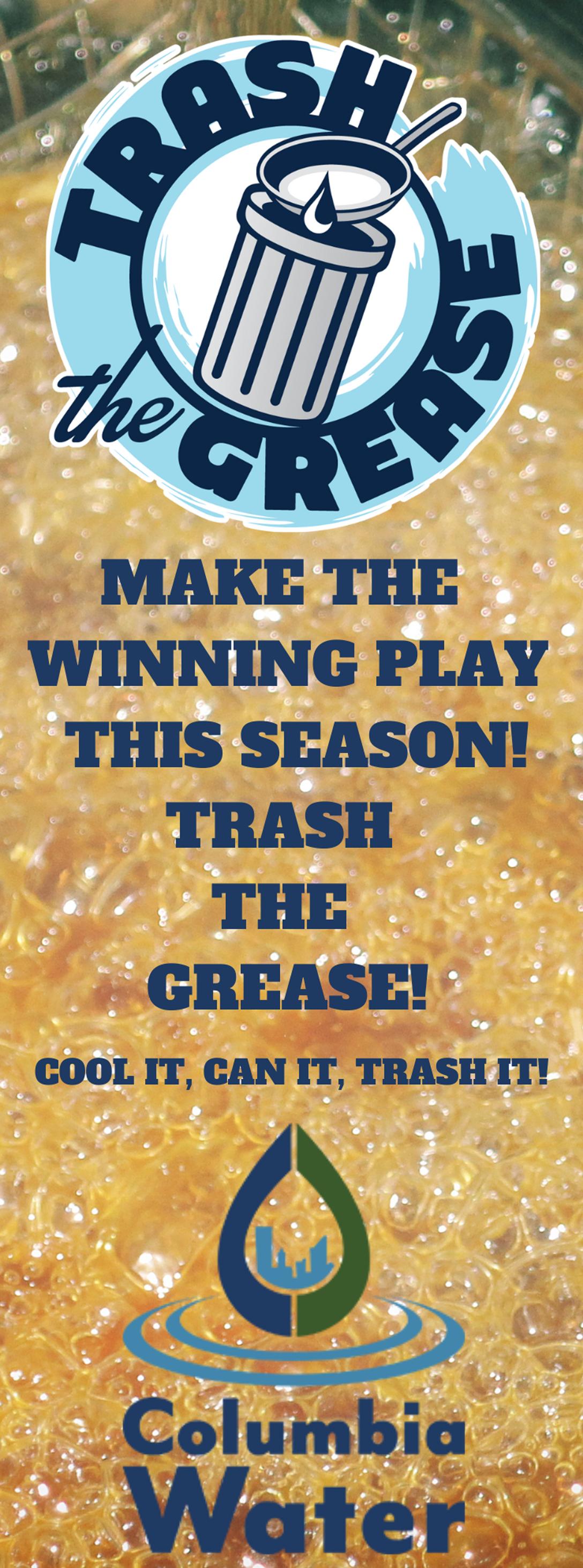



4 Columbia Edition ColumbiaNaturalAwakenings.com Contents DEPARTMENTS 7 news briefs 13 health briefs 14 global briefs 16 inspiration 18 conscious eating 21 eco tip 25 healthy kids 26 healing ways 28 fit body 30 green living 32 natural pet 36 calendar 37 natural directory 16 GRATITUDE IS GOOD MEDICINE 18 THE GUT-BRAIN CONNECTION How Food Affects Our Mood 21 ECO-SKIING Planet-Friendly Ways to Hit the Slopes 22 STAYING SERENE IN TURBULENT TIMES How to Turn Anxiety into Positive Action 25 THE COLORS OF HEALING Art Therapy for Kids 26 12 QUICK FIXES FOR ANXIETY Simple Strategies for Mental Well-Being 28 SKIING FOR FITNESS AND PURE FUN Tips for Enjoying Alpine and Nordic Styles 30 MAKING FOREVER CHEMICALS GO AWAY Manmade Compounds Pose Lasting Threat to Our Health 32 CAREGIVING COMPANIONS The Many Benefits of Service, Therapy and Emotional Support Animals 28 30 25
Natural Awakenings is a family of 50+ healthy living magazines celebrating 27 years of providing the communities we serve with the tools and resources we all need to lead healthier lives on a healthy planet.


HOW TO ADVERTISE
To advertise with Natural Awakenings, please contact us at 803-309-2101 or email ColaPublisher@ NaturalAwakenings.com. Deadline for ads: the 12th of the month.


EDITORIAL SUBMISSIONS
Email articles, news items and ideas to ColaPublisher@ NaturalAwakenings.com. Deadline for editorial: the 10th of the month.
CALENDAR SUBMISSIONS
Submit Calendar Events at ColumbiaNaturalAwakenings. com or email to ColaPublisher@NaturalAwakenings.com Deadline for calendar: the 10th of the month.
REGIONAL MARKETS
Advertise your products or services in multiple markets! Natural Awakenings Publishing Corp. is a growing franchised family of locally owned magazines serving communities since 1994. To place your ad in other markets, call 803-309-2101. For franchising opportunities, call 239-530-1377 or visit NaturalAwakenings.com.

5November 2022 3216 22
ADVERTISING & SUBMISSIONS
PUBLISHER Annette Carter Briggs
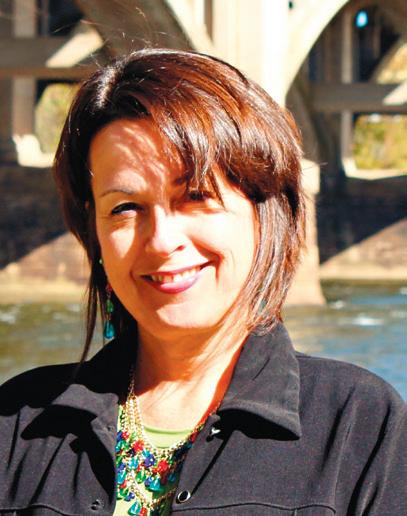
EDITOR Sara Gurgen
DESIGN & PRODUCTION Kristina Parella
Billy Briggs
CONTRIBUTING WRITERS Odell Williams Kristi Antley
SALES & MARKETING Annette Carter Briggs

WEBSITE Kristina Parella
Billy Briggs
CONTACT US
PO Box # 2812 Columbia, SC 29202 Email ColaPublisher@NaturalAwakenings.com
Annette Briggs Ph: 803-309-2101 Website ColumbiaNaturalAwakenings.com
SUBSCRIPTIONS
Subscriptions are available by sending $24 (for 12 issues) to the above address.
NATIONAL TEAM
CEO/Founder Sharon Bruckman COO/Franchise Sales Joe Dunne Layout & Design Gabrielle W-Perillo Financial Manager Yolanda Shebert Asst. Director of Ops Heather Gibbs Digital Content Director Rachael Oppy National Advertising Lisa Doyle-Mitchell Administrative Assistant Anne-Marie Ryan

Natural Awakenings Publishing Corporation 4851 Tamiami Trail N., Ste. 200 Naples, FL 34103 Ph: 239-434-9392 • Fax: 239-434-9513 NaturalAwakeningsMag.com
© 2022 by Natural Awakenings. All rights reserved. Although some parts of this publication may be reproduced and reprinted, we require that prior permission be obtained in writing.
Natural Awakenings is a free publication distributed locally and is supported by our advertisers. Please call to find a location near you or if you would like copies placed at your business.
We do not necessarily endorse the views expressed in the articles and advertisements, nor are we responsible for the products and services advertised. Check with a healthcare professional regarding the appropriate use of any treatment.
letter from publisher


Gratitude: The Take-Home Assignment

Withjust the mention of the month of Novem ber, most of our minds (and stomachs) quickly gravitate—and start to salivate—to memories of past Thanksgivings and begin eagerly anticipating the one to come. It is certainly one of my favorite holidays, and based upon research data and the tremendous revenue generated by its arrival, I am not the only one that feels this way. Millions of Americans, like myself (and you too), look forward to the most popular Thursday on our nation’s calendar. There’s little doubt that food product companies also love the “binge fest” that inevitably will ensue as cash registers sing in unison to the tune of billions of revenue dollars generated!
Yes, Thanksgiving has evolved into many things: sofa-surfing time for traditional NFL games; a time to catch up on much-needed rest; Facebook, Twitter and Instagram “best Thanksgiving picture” contests; and, of course, the usual entranced and frozen looks on the faces of those lost in love with their smartphones—stuffed with holiday treats. Sadly, what was created as a time set aside to reflect upon and articulate one’s gratitude for one another, God and the blessings received, has, for far too many, turned into nothing more than another excuse to overindulge and underappreciate.
I agree with American novelist and short story writer Alice Walker, who was quot ed as saying: “'Thank you' is the best prayer that anyone could say. I say that one a lot. Thank you expresses extreme gratitude, humility and understanding.” Like an endan gered species, gratitude has almost become extinct—killed by an ever-growing attitude of “me, my and mine,” driven by self-absorption and apathy. I know that I am not alone in recognizing this troubling trend. Inevitably, the questions that should arise are: What can we do about it, and how in the world do we find our way back to the words “thank you” again?
Well, my food-loving friends … it starts with the person that you see in the mirror every day. It starts with you and me. Gratitude is founded in positive thinking and nurtured by humility, love and appreciation for the people that give us the many reasons to be thankful and the circumstances that we successfully navigate through (good and bad). Unfortunately, these things remain out of sight when blinded by a predominat ing selfish nature. Can we all receive these words written in this letter as a take-home assignment to be completed and evaluated? Let’s shift our thinking, which controls our moods, actions and feelings, to make room for the lost words “thank you” in our vocab ulary. Cultivate seeds of gratitude in your heart. Your take-home assignment is due on “Thanks”giving day. Make sure to complete it successfully!
On assignment, Annette Carter Briggs, Publisher
Thanksgiving Y'all!
Natural Awakenings is printed on recycled newsprint with soy-based ink.

ColumbiaNaturalAwakenings.com

6 Columbia Edition
HEALTHY LIVING HEALTHY PLANET COLUMBIA EDITION Natural Awakenings Magazine is ranked 5th Nationally in CISION’S 2016 Top 10 Health & Fitness Magazines
Happy
Heidi Lux: The New Earth Gardener
Have you been thinking about becoming more self-reliant by plant ing your own vegetable garden? If so, the time to start is now. The cool days of fall and winter are ideal to build a garden that will reward you with fresh produce in the summer. Don’t know how to get started? I am ready to help you with an onsite gardening consultation. I will assist you with planning, design and layout of your garden that suits your specific situation and meets your needs. I am also offering gardening classes for churches, libraries, garden clubs or other groups. My PowerPoint presentations cover garden planning, soil and composting, good bugs/bad bugs, and plant diseases. The classes are intended to support beginning gardeners.
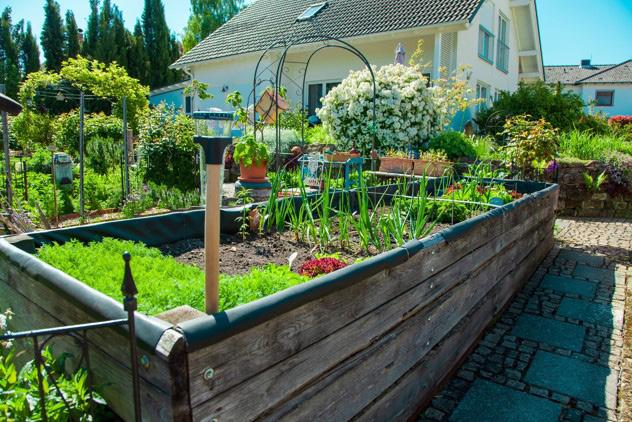
My name is Heidi Lux, and I am the New Earth Gardener. My qualifications are: International Sustainable Agriculture MS, Nature Conservation and Environmental Protection MS, Certi fied Beekeeper, and Certified Square Foot Gardening Instructor.
For more information, call 803-360-1165 or visit NewEarthGardener.com. See ad, page 9.

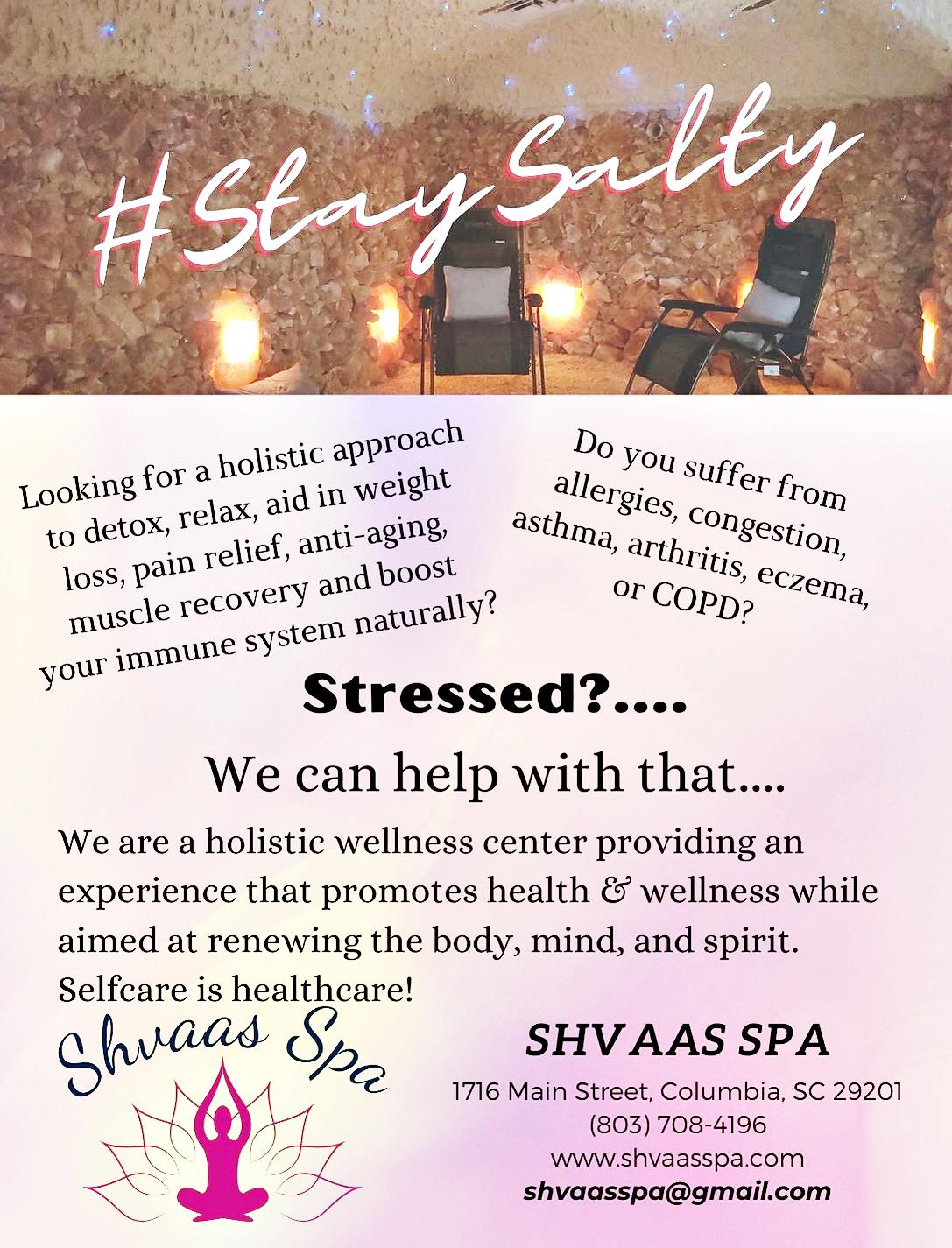
EEASC Hosts Roper Mountain Planetarium Meetup
On Thursday, November 17, from 5:15 to 7:30 p.m., the Environmental Education Associa tion of South Carolina (EEASC) is hosting its Roper Mountain Plane tarium Meetup at the Roper Moun tain Science Center, located at 402 Roper Mountain Road, in Green ville. Hosted by EEASC’s Western section, event highlights include a live sky talk show, the feature plan etarium film Habitat Earth, and a virtual Mars roller coaster ride. Through the lens of Habitat Earth, participants will discover what it means to live in today's connected world depicted by stunning visualizations of the natural world. The film’s journey will take viewers below the ocean's surface to explore the dynamic relationships found in kelp forest ecosystems. The unique experience also includes a trip beneath the forest floor to see how Earth's tallest trees rely on tiny fungi to survive, and will take the viewers to new heights to witness the intricate intersection between human and ecological networks.
Cost: Free for members; $3 for nonmembers. For more information, visit eeasc.org/event-5003088.

7November 2022 community news
Natural Being Holistic Wellness Spa & Center: Whole-Body Experience

Natural Being Holistic Wellness Spa & Center’s mis sion is to provide its clientele with a relaxing and serene atmosphere that perfectly accentuates its holistic natural care services. We assist and inform you on how to detox the body with the services and products we offer. Our goal is to encourage you to strive for wholeness and healthy living. Some of the products we offer are sea moss vitamins, ginger root vitamins, maca root vitamins, turmeric vitamins, colon cleanse herbal tea, flat tummy tea and yoni soap.
Our services include the foot detox, infrared sauna body wrap, vaginal/yoni steam and vaginal rejuvenation. The foot detox rids the body of built-up toxins through the pores on the bottom of your feet. It also helps increase energy and aids in your overall health. The infrared sauna body wrap detoxes and cleanses the body of built-up tox ins while burning 300 calories in a 30-minute session. It also helps reduce inches and tightens/tones. The vaginal/yoni steam is a natural method to cleanse and detox the womb. It helps reduce pain associated with the menstrual cycle, maintains a healthy odor, increases libido, and reduces vaginal dryness. Vaginal rejuvenation is a procedure that uses ultrasonic waves that produce heat to stimulate collagen to give a tightened effect in the vagina walls. This procedure also helps increase vaginal moisture, improves painful intercourse, reduces urinary leakage/urgency, and improves vaginal looseness.
Start a healthy journey with us and book your appointment at nbhwsc.com.
Location: Natural Being Holistic Wellness Spa & Center, 540 St. Andrews Rd., Ste. 216-A, Columbia. For more information or to schedule a complimentary consultation, call 803708-8612. See ad, page 5.

KMB Hosts Spotless Service Saturday in November
On Saturday, November 12, from 9 a.m. to noon, Keep the Midlands Beautiful (KMB) is hosting its Spotless Service Saturdays project. The KMB team and its volunteers will pick up litter and clean a creek in the Irmo area. Participants are asked to bring rain shoes and boots. All other necessary supplies will be provided.
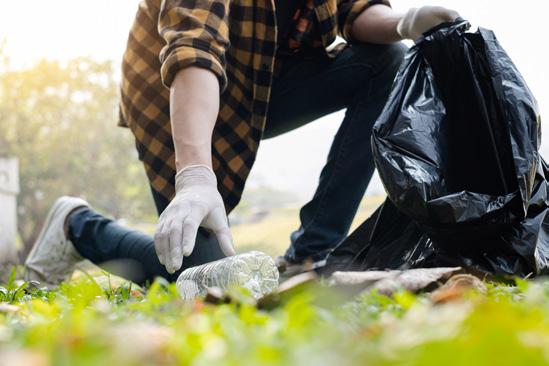
Due to the impact that COVID-19 has had on recruiting volunteers for KMB’s litter collection campaigns, the Midlands organization has added the Spotless Service Satur days project to its campaign lineup, which helps to decrease and mitigate litter accumula tion on roadways and green spaces.
For more information, call 803-733-1139. Also visit KeepTheMidlandsBeautiful.org.
ICRC Hosts Holiday Market at Crooked Creek Park
On Saturday, November 19, from 8:30 a.m. to 2 p.m., the Irmo Chapin Recreation Commission (ICRC) will host its Holiday Market event at Crooked Creek Park, located at 1098 Old Lexington Highway, in Chapin. Local area artists, crafters and business owners are invited to partici pate as event vendors. Shoppers can purchase one-of-a-kind items, including paintings, handmade jewelry, home decor pieces, and much more. Those interested in selling items must complete and submit an event application form. Admission is free to the public. This event is open to all ages.
For more information, including COVID-19 event safety guidelines, call 803-345-6181 or visit icrc.net/event/holiday-market-2.

8 Columbia Edition ColumbiaNaturalAwakenings.com community news
Unity of Columbia: A Place to Belong
Did you know you can experi ence a prosperous and joyful life, one day at a time, by living from the presence of the Spirit within? Once you discover the power and presence within you, all you have to do is connect with it and begin to live happy, joyous and free from that place. Easier said than done, you say? Well, I can’t argue with that! But as someone who has both struggled with life and found that there is a solution, I know that if you are willing to learn and practice simple spiritual principles, you can release that which no longer serves you and embrace the life you were meant to live.
As the minister at Unity of Columbia church, I can tell you that the spiritual principles I am talking about are what we teach, study, learn and live every single week. My name is Rev. Dan Beckett, and I’ve spent my life seeking, finding and sharing a way of living abundantly that is centered in God—a way of living that shows up as joy in our lives as we put into practice simple spiritual principles in all our affairs.

If you want what we have, I invite you to join us each Sunday morning at 11 a.m. for a free celebration of God in our lives through meditation, music and message. Gather in fellow ship with us and allow yourself to more fully experience God’s healing, prospering and loving presence in your life. “Come to me, all you who are weary and are carrying heavy burdens, and I will give you rest. For my yoke is easy, and my burden is light.” Matthew 11.
Location: Unity of Columbia, 1801 Legrand Rd., Columbia. For more information, call 803-736-5766, email UnityColumbia@ gmail.com or visit UnityColumbia.org. See ad, page 29.


ICRC Hosts Sleigh Bell Trot
Time to “trot” your stuff! On Monday, November 21, from 7 to 9 p.m., the Irmo Chapin Recreation Commission (ICRC) is hosting its Sleigh Bell Trot at Saluda Shoals Park East, located at 6071 Saint Andrews Road, in Columbia. Event participants will experience this unique nighttime 4.2-mile timed run taking place amid the festive light displays of Holiday Lights on the River. Trot regis trants will receive a finisher’s medal, a T-shirt (guaranteed only for early-bird registration, and can be picked up at the race the night of the trot) and refreshments. Event registration is nonre fundable. In addition, dogs are not permitted in the Sleigh Bell Trot as a safety precaution.
For more information, including cost, call 803-772-1228 or visit icrc.net/event/sleigh-bell-trot-1. See ad, page 12.
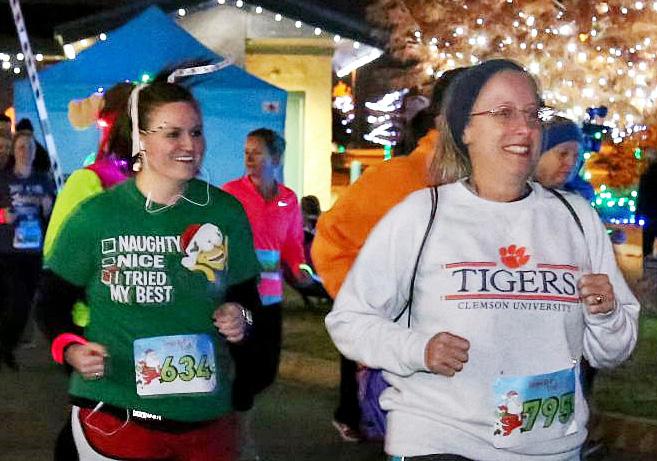
9November 2022
community
DHEC Has Sustainable Job Openings

The South Carolina Department of Health and Environmental Control (SCDHEC) has two job openings available. The first is a South Carolina AdoptA-Stream Coordinator. Job duties include coordinat ing with state partners in leading the Adopt-A-Stream program, organizing and conducting training workshops, maintaining communication with local co ordinators, and consistent follow-up with volunteers and trainers via surveys and other feedback. The South Carolina Adopt-AStream Coordinator is expected to coordinate and attend trainer trainings, recertification opportunities, and annual events. The position may require weekend work and overnight travel, and each candidate must be able to lift and carry around 50 pounds. The coordinator is expected to promote and expand the Adopt-AStream program; develop, update and distribute outreach mate rials; and keep the immediate supervisor appraised of program progress, activities and issues. Minimum requirements include a bachelor’s degree in the natural or physical sciences or a related technical field.
The second job opening is a Watershed Coordinator posi tion. The Watershed Coordinator serves as a watershed manager supporting water quality improvement and protection goals in assigned basins. The Watershed Coordinator serves as point-ofcontact for assigned river basins on water quality data, watershed information, and as a technical resource on water quality issues for both internal and external customers. This position requires one to support the objectives of the S.C. Nonpoint Source Man agement Plan, including routine examination of monitoring data, trends and areas in need of restoration. The Watershed Coor dinator provides support to the 319 Nonpoint Source Manage ment program, including assisting with site visits, reviewing grant proposals and watershed-based plans, providing technical support to stakeholders, calculating load reductions, and provid ing support to the program coordinator to meet Environmental Protection Agency reporting requirements. Other duties include planning and conducting field reconnaissance, reviewing data, and identifying causes and sources of water quality pollution and best management practices within assigned basins. A bachelor’s degree in the natural or physical sciences or related technical field is required for this position.
For more information, call Adopt-A-Stream Program Coordina tor-Water Quality Division (DHEC) Sierra Hylton at 803-898-4168 or visit SCAdoptAStream.org.


10 Columbia Edition ColumbiaNaturalAwakenings.com
news
ICRC Hosts Holiday Lights on the River

It’sthe most wonderful time of the year! The Irmo Chap in Recreation Commission (ICRC) will host its popular Holiday Lights on the River in partnership with Lexington Medical Center, starting on Wednesday, November 23, through Saturday, December 31, at Saluda Shoals Park. The popular Midlands recreation park will come alive in a brilliant blaze of more than a million sparkling lights. The hallmark drive-through experience will take guests through more than 400 animated light displays and cus tomized scenery of all shapes and sizes.
Event activities include a slide down the Winter Wonder Tube Slide, hay rides through the dazzling lights, a laser light show on the Wetland Trail, and the opportunity to color and write a letter to Santa in the Environmental Center. In addition, Santa will be visiting holiday guests on specific dates. See the website for Santa scheduling. Professional photos with Jolly Saint Nick will be available for purchase. Fun-filled memories are in store for the entire family to share for years to come!
Cost: $25 per car; $50 per 12- to 15-passenger vans, trucks with trailers, and limos; $75 per bus. Time: 6 to 10 p.m. Location: Saluda Shoals Park, 5605 Bush River Rd., Columbia (Note: Must enter at 6071 St. Andrews Rd.—between Aldi grocery store and Wendy’s). For more information, call 803-772-1228. Also visit icrc.net/event/ holiday-lights-river.
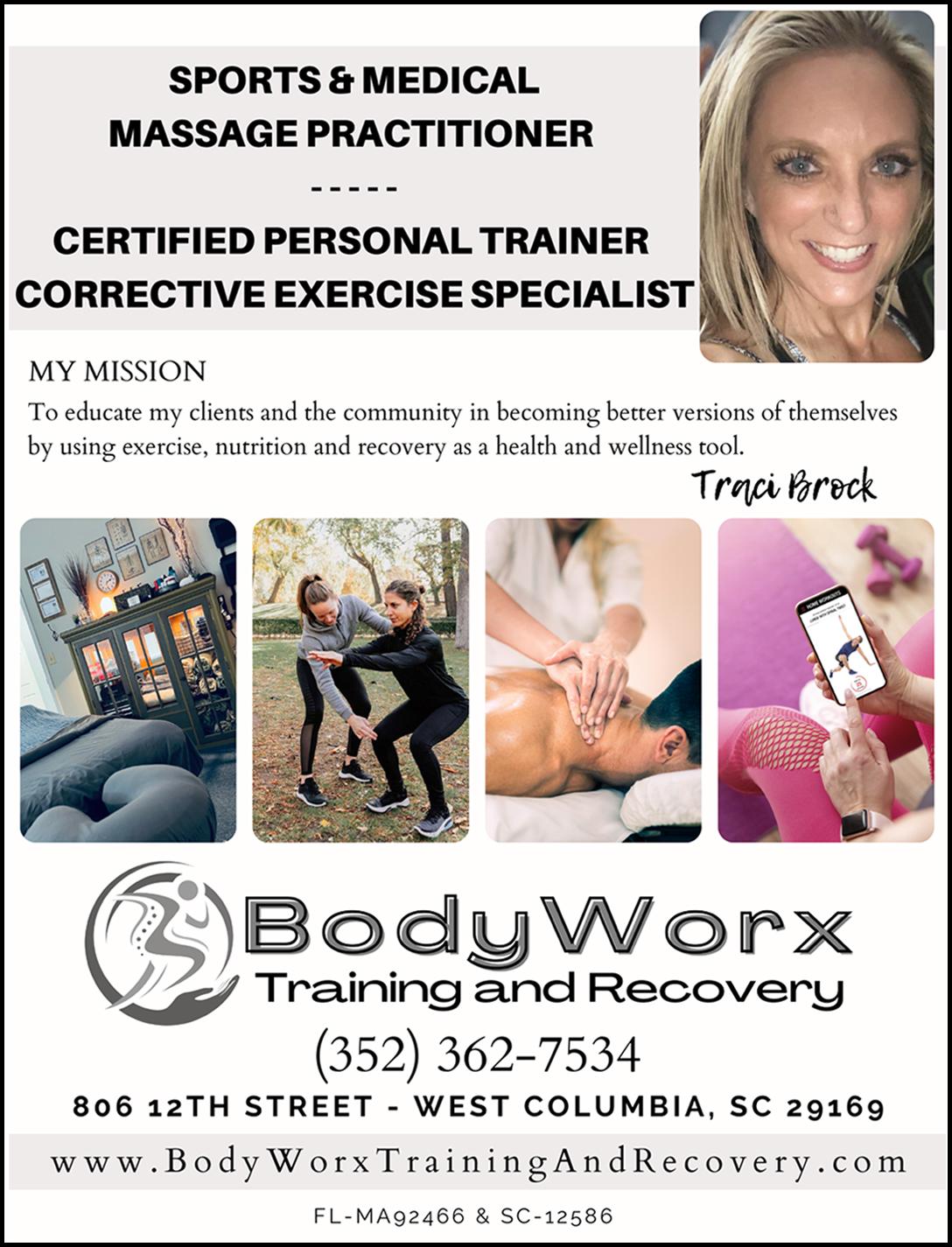
KMB Hosts Adopt-A-Highway Campaign
On Saturday, No vember 12, Keep the Midlands Beauti ful (KMB) is hosting an Adopt-A-Highway (AAH) campaign in the Midlands area. Individuals, organizations and businesses are encouraged to participate. The AAH program is sponsored by the S.C. Department of Transportation and coordinated by KMB for roads in Richland and Lexington counties. KMB also coordinates the Adopt-A-Street program for the city of Columbia.
Through these important sustainable partnering programs, caring citizens can take part in preserving and maintaining streets throughout the Midlands, which cultivates great benefits, such as tourism advancement, scenic beautification, improved quality of life, and raised educational and environmental awareness.

For more information and details about this Adopt-A-Highway campaign, including the location, call 803-733-1139 or visit Keep TheMidlandsBeautiful.org.

11November 2022
Are You Ready for Fall Open Enrollment? What You Need to Know!
There are two important open-enrollment windows coming up for most Americans to obtain medical insurance. They are the Medicare Annual Election Period and the Market place Affordable Care Act Open Enrollment.

The Medicare Annual Enrollment Period (AEP) is an annual slot that begins October 15 and runs through December 7. This period is for Medicare beneficiaries to review their current coverage and make any necessary changes to fit their individual needs for the following year. There are a few things to consider as a part of this process: 1. Review changes in your current coverage, including copays, drug costs, and provider and pharmacy networks; 2. Evaluate your healthcare needs: If there are new conditions or new medications, another type of plan may be more suitable; 3. Make a change, or stay where you are. All changes must be submitted by December 7 to ensure that new coverage options start on January 1 of the following year.
Marketplace Affordable Care Act (ACA) Open Enrollment transpires between November 1 and January 15. Individuals and families may sign up for ACA-compliant individual or family health insurance during this time interval. Fortunately for many families, the Inflation Reduction Act of 2022 provides additional subsidies to help families pay for health insurance premiums. Many families may be eligible for $0 cost or low premiums for health insurance. Information must be processed and submitted by December 15 in order to begin coverage on January 1.
For more information, contact Lily Fasbender at 803-272-4124 or visit HealthInsuranceOfSC.com. See ad, page 10.
PalmettoPride
Hosts 2023 Litter Art Contest
PalmettoPride has kicked off its 2023 Litter Trashes Everyone Art Contest—the official governor’s art contest for litter prevention. Open to South Carolina elementary students, Palmet toPride hosts the contest annually and selects five winners (one statewide winner and four regional winners from the Lowcountry, Midlands, Upstate and Peedee). All winners, their teachers, and their schools receive monetary donations, framed prints of their masterful work, and recognition at the South Carolina statehouse next spring. The statewide winner’s artwork will be featured on PalmettoPride’s future volunteer T-shirt, and the statewide win ner’s school will receive complimentary T-shirts with the design.

For more information, visit PalmettoPride.org/education/art-contest.

Dash EV Establishing Operations in Greenville County

Dash EV, an innovative electric car company, has announced plans to establish operations in Greenville Coun ty. Dash EV produces sustainable vehicles designed to expand the car sharing business. With an environmentally friendly mindset, Dash EV created Dash—a cost-effective, 100 percent electric and solar-charged vehicle. The company’s mission is to provide sustainable mobility that fills the gap between walking, biking and mass transit in cities and on campuses. Serving also as its headquarters, Dash EV’s new facility will be located at 355 South Main Street, in Greenville. Operations are expected to be online by mid-December. Individuals interested in joining the Dash EV team should visit InnovaevCarShare.com/contact-us
For more information, visit InnovaevCarShare.com.
12 Columbia Edition ColumbiaNaturalAwakenings.com community news
Jo Sonn/Unsplash.com
Fruit and Vitamin B6 May Relieve Anxiety and Depression
The best strategy to stay upbeat may be to reach for the fruit bowl, suggests a new study comparing the habits and mental states of 428 people published in the British Journal of Nutrition. Researchers at the UK’s Aston University found that the more often people ate fruit, the low er they scored for depression and the higher for mental well-being. The frequency of fruit consumption seemed to be more important to psychological health than the total amount consumed. People that ate savory snacks such as potato chips, which are low in nutrients, were more likely to report more frequent memory lapses and greater levels of anxi ety and depression. The researchers found no connection between eating vegetables and psychological health. Nu trients can be lost during cooking. “As we are more likely to eat fruit raw, this could potentially explain its stronger influence on our psychological health,” says lead author Nicola-Jayne Tuck.
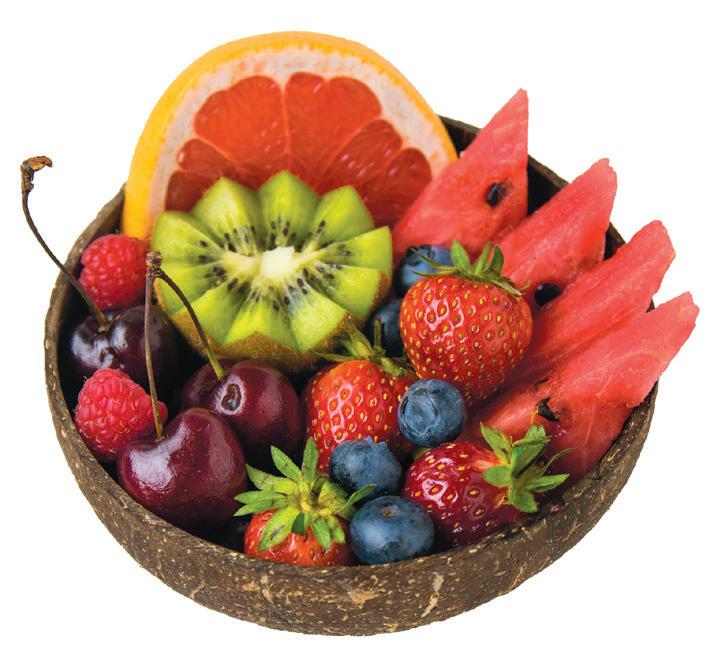
In another study, researchers from the UK’s University of Reading gave 478 young adults either high doses of vi tamins B6 or B12 or a placebo. After one month, they found that 100 milligrams of the B6 (about 50 times the recom mended daily allowance) significantly boosted gamma aminobutyric acid, which inhibits excitatory impulses in the brain, and reduced self-reported anxiety and depression levels. B12 had no such effects.
Stretching and Balance Exercises Can Avert Mental Decline
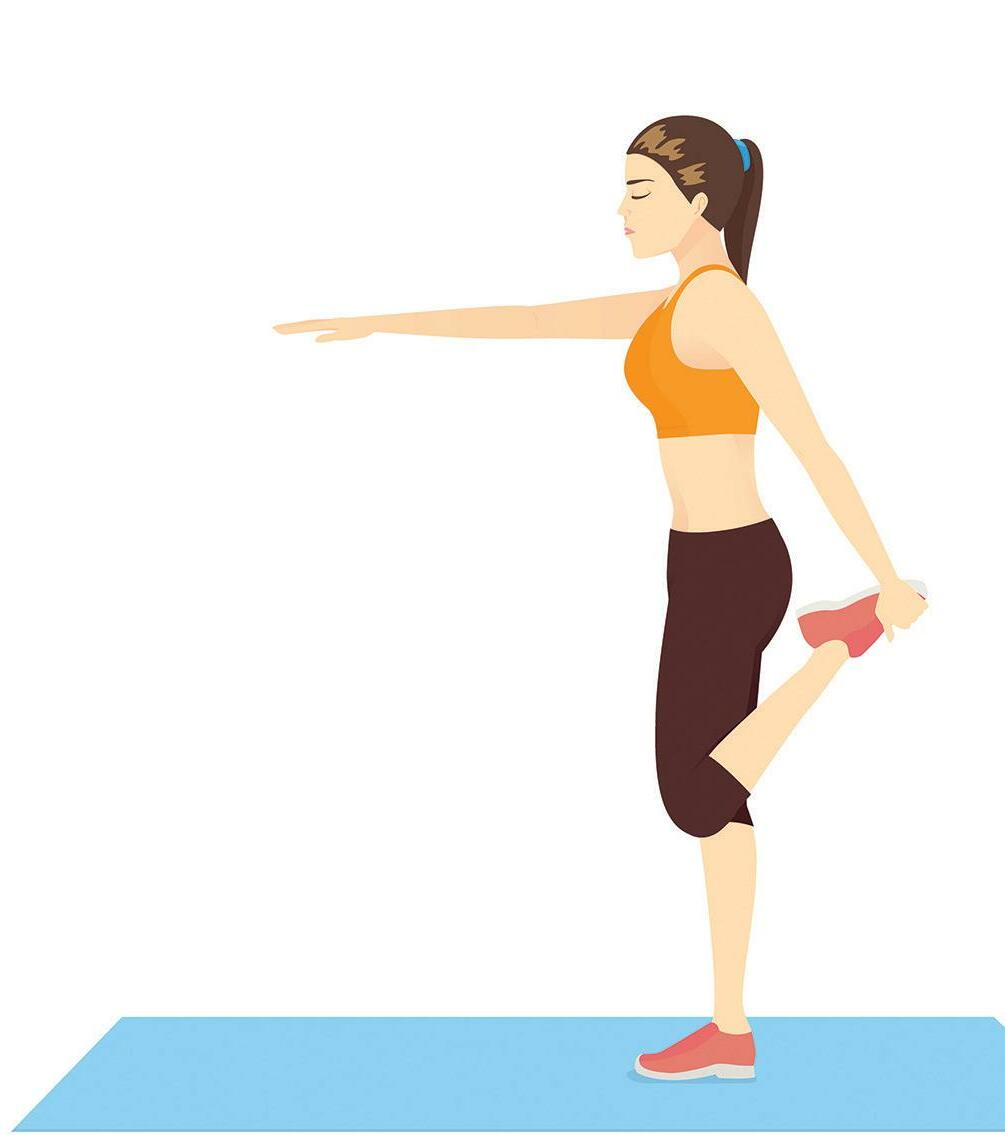
To protect against memory loss, simple stretching and balance exercises work as well as hard-driving aerobics, concludes a new study from Wake Forest University. The study enrolled 296 sedentary older adults with mild cog nitive decline such as forgetting dates, keys and names. Those that performed simple stretching routines for 120 to 150 minutes per week experienced no memory de cline in a year’s time, as measured by cognitive tests and brain scans that showed no shrink age. These results matched the outcome of people that did moder ate-intensity aerobic training on treadmills or stationary bikes four times a week, striving for about 30 to 40 minutes of a heightened heart rate. A control group of equally matched people that did not exercise did decline cognitive ly. The people that exercised were supervised by trainers at local YM CAs, which may have helped them stay motivated, say the researchers.
Longevity Diet Involves Fasting, Too
After reviewing hundreds of studies on nutrition, diseases and longevity in laboratory animals and humans, the optimal diet for longevity has “lots of legumes, whole grains and vegetables; some fish; no red meat or processed meat and very low white meat; low sugar and refined grains; good levels of nuts and olive oil, and some dark chocolate,” reports University of Southern California gerontology professor Valter Longo. According to the literature review he and others authored for Cell, a day’s meals should ideally occur within a window of 11 to 12 hours, allowing for a daily period of fasting. A five-day fast or fast-mimicking diet every three to four months was also suggested to help reduce insulin resistance, blood pressure and other risk factors for those with increased disease risks.
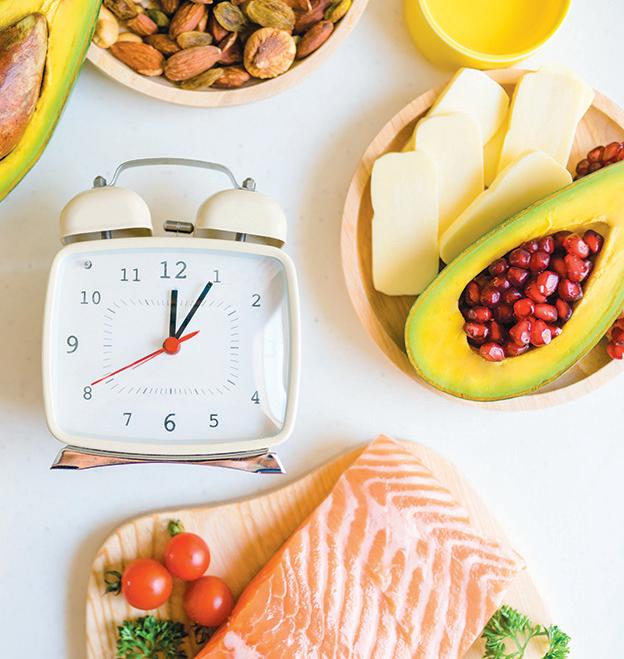
13November 2022
health briefs MIA Studio/AdobeStock.com
logo3in1/AdobeStock.com
Urban Crops Can Have Higher Yields Than Conventional Farming
A new study led by Lancaster University researchers shows that urban gardens and hydroponics can thrive and may ex ceed the yields of rural farms. Professor Jess Davies, project lead for the Rurban Revolution project that developed this study, says, “Urban food growing is often dismissed as something that cannot meaningfully contribute to food security.”
The paper compiled studies on urban agriculture from 53 countries to find out which crops grow well in cities, what growing methods are most effective and which spaces can be used for growing. It turns out that urban yields for crops like cucumbers, tubers and lettuces can be two to four times higher than conventional farming. Cost efficiency remains an open question and important factor.
Most studies on urban agriculture focus on private and community gardens, parks and field growing operations. This one includes “grey” spaces in cities that are already built, but could be used for growing, such as rooftops and building facades.
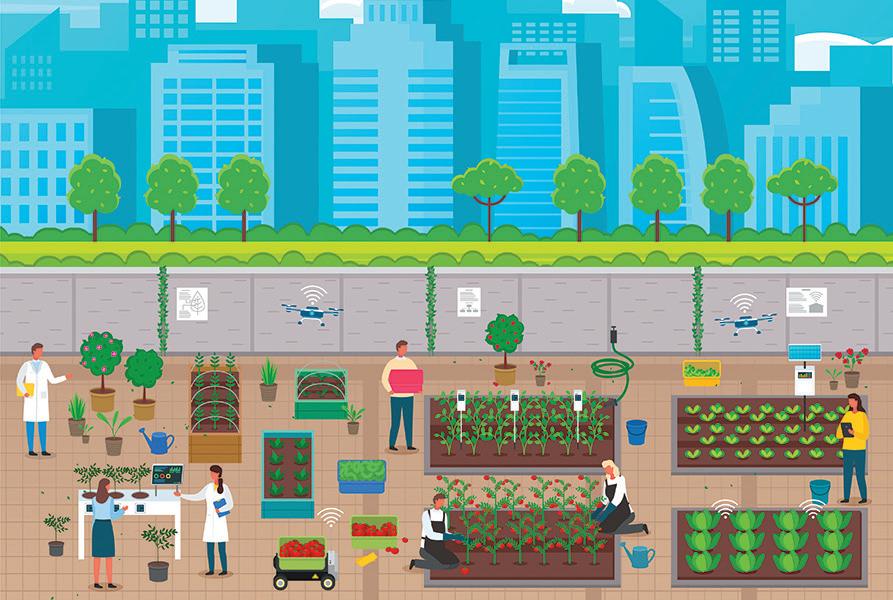
Dr. Florian Payen, lead author and researcher from the Lancaster Environment Centre, says, “Surprisingly, there were few differences between overall yields in indoor spaces and outdoor green spaces, but there were clear differences in the suitability of crop types to different gray spaces. You can’t exactly stack up apple trees in a five- or 10-layer-high growth chamber.”
Concrete Made with Rubber Refuse
Concrete consists of water, cement and an aggregate such as sand or gravel. The aggregate has to be mined from the ground, and is now in short supply in many parts of the world, while discarded tires can be partially recycled, but are often burned or relegated to landfills.
Attempts to replace some of the aggregate used in concrete with crumbled, used tires has been stymied by a bonding problem because pores in the rubber fill with water when the concrete is first mixed, and become empty holes as the water evaporates and the concrete sets.

As reported in the journal Resources, Conservation & Recycling, scientists at Australia’s RMIT University have produced good-quality concrete in which all of the aggregate has been replaced with tire particles. They started with wet concrete in which all the aggregate is comprised of tire particles, then placed it in special steel molds as it set to place pressure on the concrete, compressing the particles and the pores within.
Once the concrete dried and set, the cement had bonded much better to the tire particles. When compared to previous 100-percent tire-aggregate concrete produced by conventional means, the pre loaded concrete exhibited 97 percent, 59 percent and 20 percent increases in compressive, flexural and tensile strength, respectively.
Cool Pavement Program
U.S. Environmental Protection Agency data shows the differ ence in nighttime temperatures in heat island areas can be as much as 22 degrees warmer than temperatures measured outside such locations. This leads to more energy consump tion, greenhouse gas emissions, air pollution and other harmful effects.
Cool pavement is a road treatment made with no harmful chemicals—just asphalt, water, an emulsifying soap, mineral fillers, polymers and recycled materials—applied on top of existing asphalt pavement. Be cause the surface reflects, rather than retains heat, it has the potential to offset rising nighttime temperatures.
In 2020, portions of eight neighborhoods in Phoenix received cool pavement asphalt coating treatment in areas already in need of pavement preservation. The city partnered with Arizona State University researchers to conduct scientific tests using thermal imaging by helicopter flyovers and tempera ture sensors embedded in the pavement surface, studying how it could mitigate the urban heat island effect. In October 2021, the pilot program ended and cool pavement has become a regu lar program for the city’s Street Transportation Department.
Similarly, 1 million square feet of roads in Los Angeles have been covered with solar-reflec tive paint in the GAF Cool Community Project, which includes colorful murals by a local artist on a basketball court, a school playground and a parking lot.
14 Columbia Edition ColumbiaNaturalAwakenings.com
linagaga/AdobeStock.com thawats/AdobeStock.com
global briefs
Gift Guide Holiday





Gratitude is Good Medicine
by Madiha Saeed

Stress, work and family routines can trap us in a pattern of negative thinking that feeds on itself and creates stress and unhappiness. With our internal and external worlds being bombarded these days with negativity, being optimistic is more im portant now than ever before.
Gratitude is not just a feel-good word. It is an emotion expressing appreciation for what one has—a universal concept in nearly all of the world’s spiritual traditions. Practicing gratitude daily is proven to have actual physiological consequences. It helps lower inflam matory markers, influences epigenetics, improves the immune system and even helps the heart, adding years to life.

Optimism has been found to correlate positively with life satisfaction and self-esteem. “Heartfelt” emotions like gratitude, love and caring produce coherent brain waves radi ating to every cell of the body, as shown by technology that measures changes in heart rhythm variation and coherence.
Our subconscious governs 90 percent of our thoughts and actions. It shapes our every behavior. But the subconscious mind is nothing other than neural pathways that have been established in the brain as a result of past beliefs and conditioning. Our subconscious does no thinking of its own, but rather relies on our perception of the world around us, interpreting verbal and nonverbal cues.

When we consciously turn negativity to positivity from the inside-out, the neural path way associated with negativity will take time to come down fully, so it is critical to practice gratitude regularly. Upon waking in the morning, say 10 things that you are grateful for. Keep a gratitude journal. Put sticky notes all over the house with gratitude messages—on photos, light fixtures, fans, exercise equipment—to create a zone of subliminal positivity.
Remember that our perspective can reflect either our pain or our power. That choice is in our hands. Know what you are grateful for each day.
Madiha Saeed, M.D., ABIHM, is the bestselling author of The Holistic RX, an international speaker, founder of HolisticMomMD.com and director of education for KnoWEwell.
16 Columbia Edition ColumbiaNaturalAwakenings.com inspiration
Tinnakorn/AdobeStock.com
Crêpes & Croissants
Local Cuisine with a French Twist
by Odell Williams
Located in the heart of beautiful downtown Columbia, on Sumter Street, is Crêpes & Croissants, a very popular eatery specializing in sweet and savory French crêpes as well as other cultural specialties. Established in 2012 by French native and master crêpe maker Laurent Prescelti, Crêpes & Croissants has become a restaurant of choice for countless residents in the Midlands looking for unique and delicious food at bud get-friendly prices. Since its opening, Prescelti’s passion to provide a wonderful dining experience underscored by great food and complemented by a pleasurable atmosphere has culminated in a one-of-a-kind breakfast and lunch opportunity not to be missed.
While dining, customers can enjoy a culinary trip to France as they take in the beautiful and ambient atmosphere meticulously crafted by Prescelti. The facility is modern yet very French, with reminiscent photos of Paris accompanied by French music. “I wanted to bring the ‘savoir faire’ of France with all of its storied, magical and enticing qualities to the South to provide local restaurant-goers the perfect opportunity to experience many of the wonderful dishes and treats from my country,” recounts Prescelti.
Crêpes & Croissants’ menu selection is vast and impressive, featuring a wide variety of favorites. The savory croissant sandwiches are filled with an array of fillings—even chocolate! And Prescelti’s signature macaroons and in-house French pastries are sure to tickle the taste buds, keeping customers coming back for more. In addition, there is a wide range of downhome Southern and local favorites to enjoy.
The restaurant also offers catering for parties, events and countless other activities, such as tailgating, birthday celebrations, weddings and more. From small get-togethers to large gatherings, Crêpes & Croissants can meet the culinary need and demand with excellent food matched by uncommonly good service.



Adds Prescelti: “Whether dining in, or grabbing something delicious to go, Crêpes & Crois sants is ready to meet the need. Come visit with us, or impress your party and delight your guests by hiring your very own personal chef to serve savory or sweet delicious crêpes. We'll take you on a culinary trip to France without leaving Columbia!”
Crêpes & Croissants is located at 1465 Sumter St., in Columbia. For more information, call 803-462-4779, email ColaCrepes@gmail.com or visit CrepesEtCroissants.com. See ad, page 16.



business spotlight
The Gut-Brain Connection
HOW FOOD AFFECTS OUR MOOD
 by Kimberly B. Whittle
by Kimberly B. Whittle
all heard the phrase, “You are what you eat,” but the connection is more than just physical because food impacts our mood, too. During the last decade, there have been an increasing number of studies exploring what’s called the gut-brain axis and the role that microorganisms in the gut play in mental health conditions like anxiety, stress, depression and other disorders.
We’ve
Depression is a leading cause of disability in the U.S. and worldwi de. There are long-held views in medicine that depression is caused by imbalances in brain levels of serotonin—the neurotransmitter that plays a key role in regulating mood and other functions like digestion and sleep. These beliefs resulted in decades of extensive use of antide pressants, most of which boost serotonin in the brain.
However, research by University College London, published in July in the journal Molecular Psychology, found “no consistent evidence of there being an association between serotonin and depression, and no support for the hypothesis that depression is caused by lowered sero tonin activity or concentrations.”
Michael Gershon, M.D., a Columbia University professor of pa thology and cell biology, and author of The Second Brain, has explai ned to psychologists that “scientists were shocked to learn” that about 90 percent of serotonin is not created in the brain, but is actually
produced in the gut and carried from there to the brain, not the other way around. This relationship is called the gut-brain axis.
A recent literature review of 26 studies suggests that imbalances in gut bacteria can disrupt the two-way communication along the gutbrain axis, leading to depression and other psychiatric issues.
Gut Health Equals Mental Health
“Gut health is extremely important for mental health,” says Bhavna Barmi, Ph.D., a senior clinical psychologist, relationship therapist and founder of the New Delhi-based Happiness Studio. “The tradi tional belief that only psychiatry and talk therapy can treat mental health has widened to include lifestyle and food, too.”
“The truth is that our food is the primary contributor of the qual ity and diversity of bacteria in the microbiome,” says Ishi Khosla, a clinical nutritionist and president of the Celiac Society of India. “There is an intricate relationship between the gut and the brain.” Food sensitivities, alcohol and highly processed, refined and sugary foods can lead to a lower diversity of good bacteria and increases in bad bacteria in the gut, which can trigger gut inflammation and unfavorable health conditions.
Most mood-related disorders start with inflammation of the brain as a response to inflammation in the gut. “Certain foods, like gluten,
18 Columbia Edition ColumbiaNaturalAwakenings.com conscious eating
Photo Sukjai/AdobeStock.com
Photo courtesy of Michelle Demuth-Bibb
can cause an inflammatory response in the gut.
Over time, sensitivities to gluten and other foods can lead to a ‘leaky gut’, an impairment of the gut lining that lets toxins into the bloodstream. Often, if it remains unresolved, it leads to mood-related disorders and other chronic health conditions,” says Khosla.
Clinical nutritionists and other practitioners use biochemical markers and food sensitivity tests to help identify food ingredients that trigger inflammation in patients. However, if a leaky gut is present, a food sensitivity test may not be very accurate. As Tom O’Bryan, DC, chief health officer of KnoWEwell, explains in his bestselling book The Autoimmune Fix, “When you have a leaky gut, a prac titioner may do a 90-food testing panel that comes back sensitive to 20 or 25 different foods. And then the patient exclaims, ‘Oh my God, that’s everything I eat.’ Well, of course it is, because your immune system is doing what it is supposed to do—protecting you from toxins. Once the inflammation in the gut is reduced through the elimination of wheat and other offensive foods, and the imple mentation of a personalized diet and protocol to heal the gut [takes place], the same food testing panel will correctly identify those few ingredients to permanently avoid.”
Mood-Lifting Foods
Kelly Brogan, M.D., a holistic psychiatrist and author of The New York Times bestsellers A Mind of Your Own and Own Your Self, as well as co-editor of the landmark textbook Integrative Therapies for Depression, recommends making three dietary changes to lift mood:

n Eliminate processed foods and food toxins
n Add whole foods, good fats and therapeutic foods

n Add fermented foods
Eating foods that are fresh, whole, simple and organic when available fuels good gut bacteria and eliminates the toxins in packaged foods such as hydrogenated vegetable oils, preserva tives, dyes, emulsifiers, taste enhancers and sugars that can upset the proper balance in the gut. A powerful mood regulator is the omega-3 fatty acid found in such cold-water fish as salmon and trout or taken as a dietary supplement. These fatty acids regulate neurotransmission and gene expression, act as antioxidants and have potent anti-inflammatory properties. Good fats from pas ture-raised meats, wild fish, eggs, nuts, seeds, olive oil, coconut oil and grass-fed ghee also contribute to mood regulation.
“Resetting the gut through good bacteria in probiotics and feeding the good bacteria with prebiotics is a powerful tool to fight mood disorders, pickles (truly fermented, not just cured in vinegar), kimchi and coconut kefir are natural sources of probiotics. They are delicious and easy to make at home.
A 2018 University of Toronto study in the

Psychiatry identified 12 nutrients to prevent and treat depressive disorders and found that the following foods had the highest levels of those beneficial nutrients: bivalves such as oysters and mussels; various sea foods such as octopus, crab and tuna; organ meats; leafy greens; let tuces; fresh herbs; peppers; and cru ciferous vegetables such as cauliflower and broccoli.


Choosing what to eat is complex and affected by culture, cost, environment and taste
ing one or two foods rich in beneficial nutrients and eliminating a highly processed or packaged food or two. Focus on incorporating a rainbow of red, yellow, orange and green foods into meals. therapy to improve mood is inexpensive, free of side effects and can begin to show results within days,
from this point on, nutritionists, psychiatrists and psychothera pists work together for holistic care of the client to lead to maxi mum benefit.
Kimberly B. Whittle is the CEO of KnoWEwell, the Regenerative Whole Health Hub online solution for health and well-being. Visit KnoWEwell.com.
19November 2022
RREADINGS EADINGS OONLY NLY $$20 20 CRYSTALS CRYSTALS TAROT / TREIKI AROT / REIKI JJEWELRY EWELRY AURA APHOTOS URA PHOTOS FREE FLECTURES REE LECTURES HENNA & HMORE ENNA & MORE JANUARY 14-15, J2023 ANUARY 14-15, 2023 PSYCHIC & HOLISTIC EXPO PIRITUAL SUSIONS F w w w . S p i r i t u a l F u s i o n s . c o wm w w . S p i r i t u a l F u s i o n s . c o m E X P L O R E T H E P O S S I B I L I T I E S E! X P L O R E T H E P O S S I B I L I T I E S ! COLUMBIA METRO CONVENTION CTR 1101 Lincoln St, Columbia, SC $9 daily admission / 10:00-6:00 pm
QUINOA AND BEETROOT
SALAD WITH A HINT OF MINT
YIELD: 2 SERVINGS
SALAD:
½ cup quinoa
1 medium beetroot, grated 10-12 fresh mint leaves, roughly chopped ¼ cup fresh cilantro
2 Tbsp shelled pistachios, roasted
2 Tbsp golden raisins
1 cup water
DRESSING:
2 Tbsp extra-virgin olive oil
3 Tbsp lemon juice, adjust to taste
2 cloves garlic, adjust to taste
½ tsp roasted cumin powder
Salt and ground black pepper to taste Honey to taste
Rinse quinoa and add to a pot. Add water and cook uncovered for around 15 minutes or until all the water is evaporated. Cover the pan and switch off the stove. Keep covered for 5 minutes, remove lid and fluff cooked quinoa with a fork. Set aside to cool.
In a bowl, mix all dressing ingredients and set aside. Place cooled quinoa, grated beets, pistachios, raisins and chopped herbs in a large bowl. Pour the dressing, toss well. Serve cold.
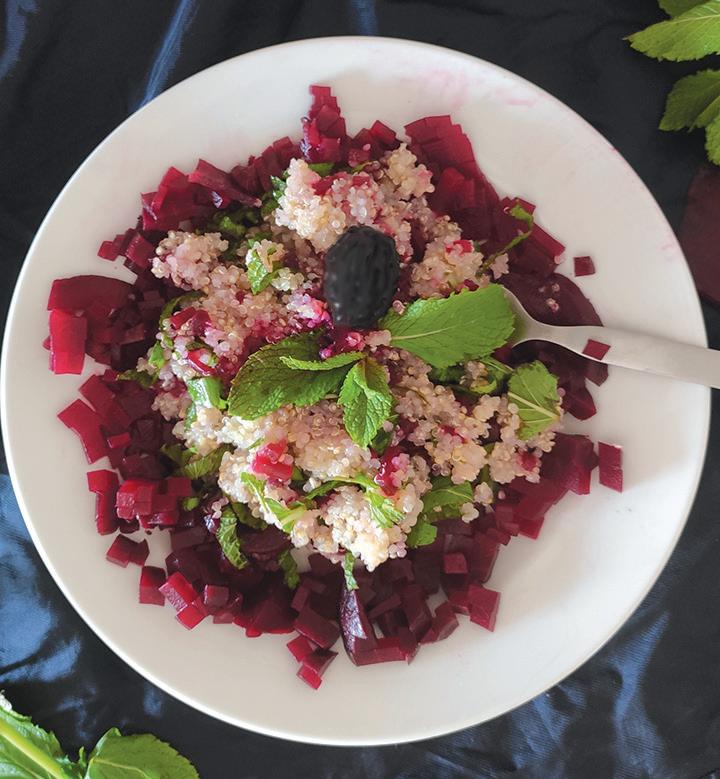
Recipe courtesy of Ishi Khosla.
GUT-HEALING SMOOTHIE
Blueberries contain compounds that increase beneficial bacteria in the gut, as well as antioxidant properties that are re markable at protecting our brain. In fact, consuming 1 cup of blueberries per day for three years gets our brain working as well as it did 11 years earlier. Bananas are high in pectin, which helps to normalize movements of the large intestine. Look for gelatin powders from pastured animals.
YIELD: 2 SERVINGS
1-1½ cups water
½ cup coconut milk
1-2 frozen bananas
1 cup frozen blueberries
2 Tbsp ground flaxseed
1 Tbsp unflavored gelatin powder
1 Tbsp high-quality fish oil
1 tsp ground cinnamon
1-3 scoops L-glutamine powder (optional)
In a blender, combine the water, coconut milk, bananas, blueberries, flaxseeds, gelatin powder, fish oil, cinnamon and L-glutamine powder (if using). Blend until smooth. Add more water for a thinner smoothie, if desired. Serve immediately or pour into ice-pop molds and freeze for a sweet treat later on.
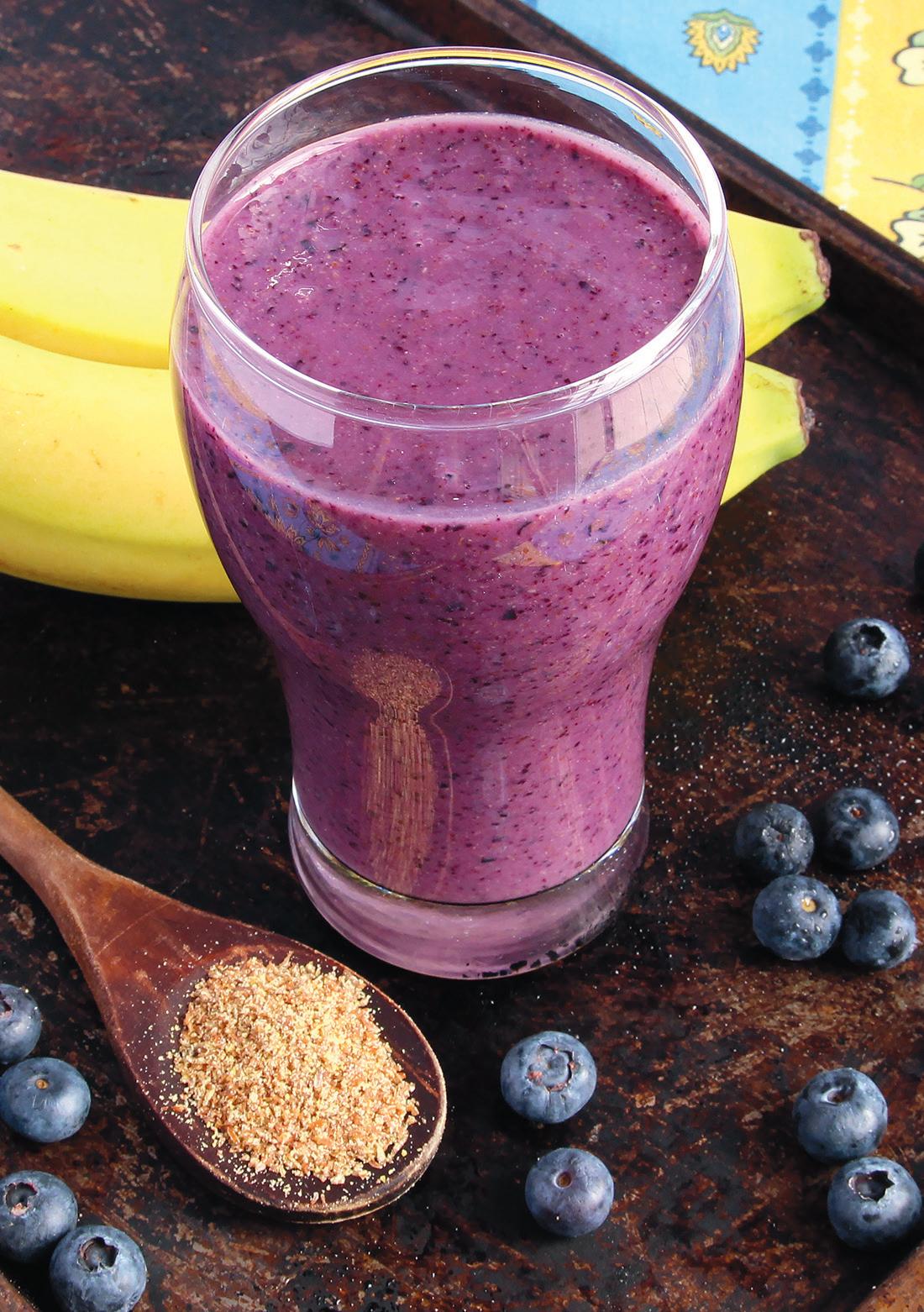
Recipe courtesy of Tom O’Bryan, DC, CCN, DACBN, from his book The Autoimmune Fix.
ALMOND FLOUR BLUEBERRY MUFFINS
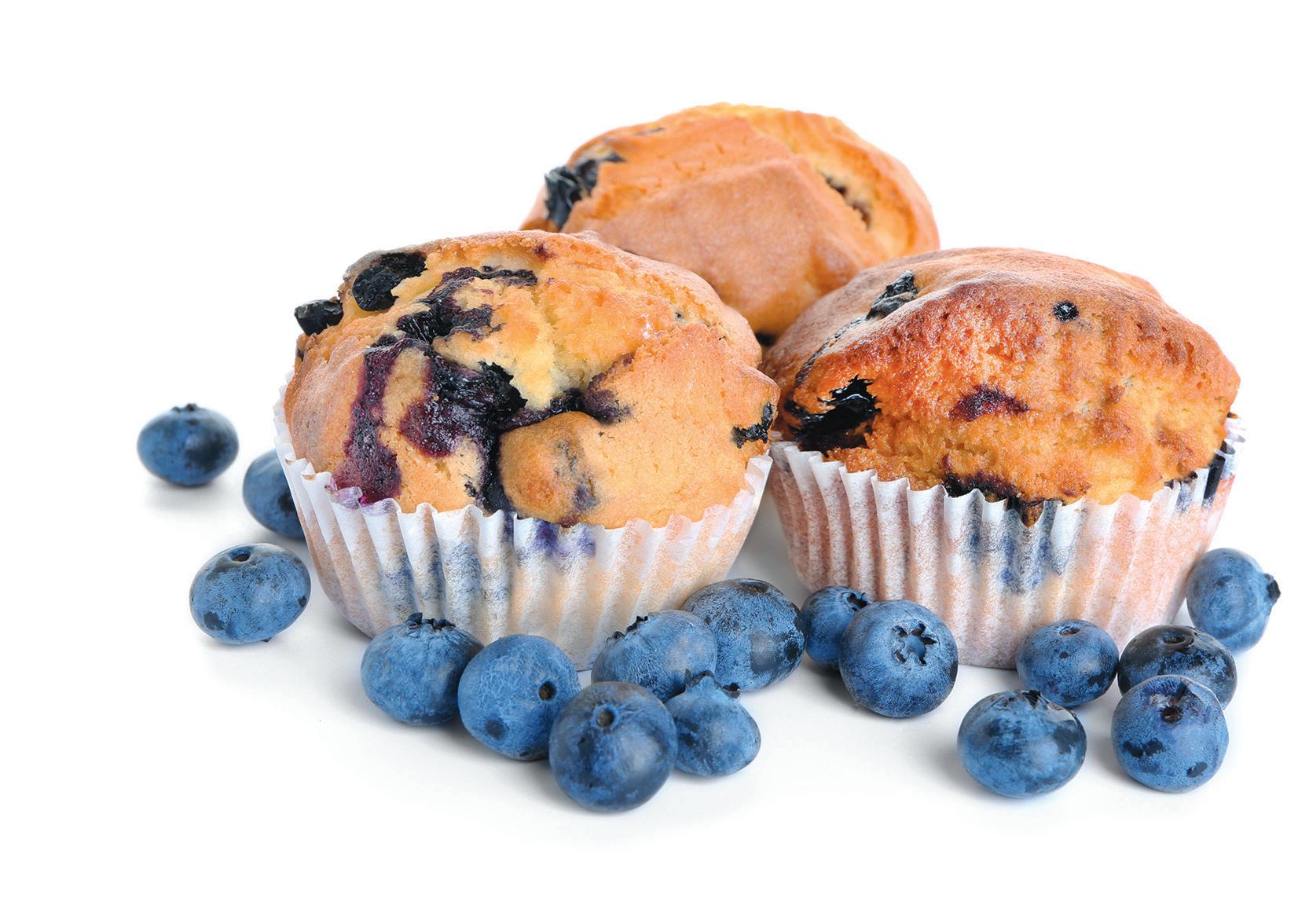
YIELD: 12 TO 24 SERVINGS
3 cups almond flour
6 eggs
½ cup honey
½ cup avocado oil
1 tsp baking soda
1 tsp salt
1 cup blueberries
Preheat the oven to 350° F. In a large bowl, combine all the dry ingredients—almond flour, baking soda and salt—and whisk well. In a separate smaller bowl, combine the wet ingre dients—eggs, honey and avocado oil—and blend until smooth.
Then pour the wet ingredients into the dry ingredients and mix until thoroughly com bined. Fold in blueberries. Line cup muffin tin with paper liners and pour in batter. Bake for 15 to 20 minutes.
Recipe courtesy of Madiha Saeed, M.D., ABIHM.
20 Columbia Edition ColumbiaNaturalAwakenings.com
Saretta_followyourdr/AdobeStock.com mariemilyphotos/AdobeStock.com Pixel-Shot/AdobeStock.com
ECO-SKIING
PLANET-FRIENDLY WAYS TO HIT THE SLOPES

M any alpine ski resorts are going more and more green, enabling enthusiasts to reduce their impact on the planet while enjoying the winter sport. Here’s some eco-information, as well as money-saving tips:
As detailed on SkiVermont.com, the latest Vermont Ski Areas Energy Savings Impact Report from Efficiency Vermont revealed that 13 state ski areas have completed 668 projects since 2000, including “low-energy snowguns, compressed air right-sizing, lift terminal heater controls, thermal shells and many other systems and improvements.”
Last year, Taos Ski Valley, in New
Mexico, treated 245 acres of high mor tality spruce and fir trees to help restore the forest ecosystem and diverted 10,287 pounds of waste from landfill to compost, equaling a CO2 reduction of approximately 3.2 megatons. Park City and Deer Valley, in Utah, have partnered with nearby districts to source power from an 80-megawatt solar farm. Vail Resorts, encompassing more than 40 ski areas, continues its EpicPromise program with the goal of zero net emissions, zero waste to landfills and zero operating impact on land and ecosys tems by 2030 (TheAvantSki.com).
Skiers at Big Sky Resort (BigSkyResort.
com), in Montana, can minimize their car bon footprint by offsetting their trip with partner Tradewater, a Chicago company that facilitates lowering greenhouse gas emissions. All of the resort’s lift opera tions have been running carbon-free since March 2020, and ongoing efficiency proj ects include upgrading hotel thermostats and increasing the use of solar power.

Wear sustainable brands. Patagonia, The North Face and Cotopaxi are some of the brands that make ski jackets from recycled materials. Also, instead of buying new, con sider patching up an old jacket if it has a tear.
Take a pass. Many individual ski resorts and associations offer lift ticket pass es. Tips on making the best choice for individual or family needs can be found at SkiMag.com. It’s a popular trend: The National Ski Areas Association (nsaa.org) reports season passes now make up more than half of all lift ticket sales.
Group together. Gather family and friends in one car. Also, local ski clubs, sporting goods retailers and parks and recreation departments often organize group trips by chartering buses and arranging for discounted lift tickets. Warm-weather ski clubs arrange for flights to ski resorts. Making new friends along the way is a nice bonus.
Leave a clean path. Don’t leave any plastic water or sports drink containers or power bar wrappers on the snow.
21November 2022 Gorilla/AdobeStock.com eco tip
Staying Serene in Turbulent Times
How to Turn Anxiety into Positive Action
 by Ronica O’Hara
by Ronica O’Hara
In this day and age, we have good reason to toss and turn in our beds at night. As our nation faces climate catastrophes, acrid politics, stubborn inflation, unpredictable virus variants and hot-button issues like abortion and guns, there’s good reason our collective anxiety levels are at a high pitch. A recent Yale survey found that 70 percent of Americans report being anxious or depressed about global warming, and a Penn State
survey this year found that 84 percent of us say we are “extremely worried” or “very worried” about where the country is head ed. Researchers are coining new terms: “polycrisis”, for complex, cascading crises in interacting systems, and “pre-traumatic stress disorder”, when fear of an outcome makes it as good as real to our psyches.
“It’s easy for people to feel overwhelmed now, feeling there are breakdowns and threats on many fronts. People can wonder ‘Where do I even start?’ and feel powerless and hopeless and numb,” says psychiatrist Janet Lewis, M.D., a founder of the nation wide Climate Psychiatry Alliance and a University of Rochester clinical assistant professor of psychiatry. “We are part of a complex system that is moving into new ways of functioning, but there’s no way of predicting ahead of time exactly what all the features of the new ways of operating will be. That makes it impossible for us to wrap our minds around everything that is happening.”

Still, she adds, “We are also by definition part of the system, and therefore have a responsibility to do what we can. We can’t sit on the sidelines and merely hope that things transform in good directions. The situation being so serious also means that what we do now is really important.”
To move from anxiety into effective action, mental health experts advise sev eral strategies: taking a wider perspective, building resilience through self-care and taking individual steps to make a collective difference. As the Dalai Lama encourages, “If you think you are too small to make a difference, try sleeping with a mosquito!”
Taking a Wider Perspective
News reports almost always sound dire— just like the amygdala of our brains, jour nalists often see their function as focusing on threats to alert us to dangers. “Still, if you take the long view of history, we are much better off than we were 200 years ago or 1,000 years ago, but it took many years to make those changes,” counsels Robert L. Leahy, Ph.D., director of the American Institute for Cognitive Therapy and author of the bestselling The Worry Cure and the upcoming If Only
“We never know if something is hopeless until we have all the data, and we seldom
22 Columbia Edition ColumbiaNaturalAwakenings.com
Mediteraneo/AdobeStock.com
have all the data,” he says. “And when it comes to political emotions, many of the predictions that are made by the ‘talking heads’ in media never come true.”
Leahy counsels patience: “Social change does not come about by one person doing something. That usually comes about by a long process of millions of people changing their attitudes and changing their behav ior. Small efforts can be made on a daily basis that move this slow process forward. We need to take a longer view, rather than expect immediate change.”
In this ongoing process, anxiety has its rightful place. “Anxiety makes us look around, figure out solutions and act. This can absolutely be turned into something positive,” says neuropsychologist Barbara Easterlin, of Jackson, Wyoming, an expert on eco-anxiety who is on the steering committee of the Climate Psychology Al liance of North America. “Doing just one thing to help the planet consistently helps defeat anxiety.”
Taking action moves us into our power— as 15-year-old Greta Thunberg demonstrat ed by holding a sign outside the Swedish parliament. Personal actions matter be cause numbers add up. Only 25 percent of individuals in a social group need to make a shift before significant social change fol lows, conclude researchers at the University of Pennsylvania School of Engineering and Applied Science that analyzed a decade of societal changes in voting, health, technol ogy and finance. Once a group reaches that tipping point, it can trigger a change in the rest of society, says study author Damon Centola, Ph.D., author of Change: How to Make Big Things Happen.
Building Resilience with Self-Care
Fears about the shape of the planet and na tion are often piled on top of our everyday living anxieties about family and finances, which can induce emotional overload. “We all have a ‘zone of resilience’ or ‘window of tolerance’, outside of which we become more reactive, less able to function effec tively. But it is not fixed. We can learn tools to expand it and cultivate the capacity to be with more,” says Easterlin. Therapy can be a part of that process
by challenging us to examine “the mental narratives that can exacerbate distress,” says Leslie Davenport, a climate psychol ogy consultant and author of Emotional Resiliency in the Era of Climate Change. It’s important to find a therapist, she says, that “validates that your feelings are a nor mal response to an existential crisis.” She has helped develop new programs at the American Psychology Association and the California Institute of Integral Studies to train therapists in treating eco-anxiety. For low-cost online support, the Good Grief Network offers a 10-step, 10-week program to help process personal anxiety and grief about climate change. People are also sit ting down to share their distress at climate cafes, small local gatherings springing up across the country and globe, including some online.
Getting enough sleep, eating healthy and exercising are also key self-care strategies. When anxiety strikes, psychologists advise shifting attention from the head to the body, using such approaches as mindful breathing, dancing and grounding. Medi tation, easily accessed these days through apps like Calm and Headspace, helps us to enter into what religious and spiritual teachings call “the still point within.”
Rather than “doomscrolling” when anx iety mounts, cutting back our media use can significantly lower stress levels, studies show. Wise media strategies include choos ing well-established, credible news sources;
reading rather than watching the news to lower its emotional impact; limiting news intake to 10 minutes once or twice a day; taking a “news fast” on occasion; and pass ing up sources that incessantly feed fury.

On the other hand, it’s essential to find sources for hope, an emotion important in recovery from anxiety disorders, according to a study in Behavior Therapy. Googling “good news on climate change” will bring up articles about alternative energy growth, new super-enzymes that eat plastic rubbish and black rhinos coming back from the brink of extinction. Although dystopic books abound, others offer hope, such as Drawdown, with its sensible, scaled-down strategies to stop global warming by 2050.
Moving into Action
Virtually no one can take on all the prob lems of the nation and globe at once—and the good news is that unless we hold high public office, we don’t have to. Instead, “In taking action, focus on what you are good at, what your sphere of influence might be,” advises Lewis. “What are you most heart broken over? Get involved in that and allow yourself to feel really good about what you’re doing and other people are doing.”
By narrowing our focus, we can hone in on an issue and figure out our part in its solution. “We need a broad range of collective action for transformation,” says Davenport. “For climate change, a teacher could bring social-emotional learning to
23November 2022 LIGHTFIELD STUDIOS/AdobeStock.com
climate education into the classroom or start an after school ‘green club’; an artist could use their creative medium to com municate about climate in a moving way that could engage others; a nurse could create a waste-reduction initiative within a medical setting. These efforts all have ripple effects and help to elevate each other.”
In one recent study, people were found to consume less energy if they believed their neighbors did so and personally cared about conservation. Our neighborhoods are the place to take the small, meaningful steps that address the “crisis of connection” underlying rancorous national crises, says New York Times columnist David Brooks. He advocates “radical mutuality”, saying, “Nothing we do, however virtuous, can be accomplished alone.” Through simple actions like having casual conversations around town, pitching in to help a fam ily in crisis, bringing a salad to a block party, tutoring a child

or holding a civic post, we build the warm relational bonds that strengthen communi ties. As we meet others that feel as strongly as we do about our issues, our numbers start building and collective action can unfold.
“Independent of political beliefs, many people can find common values such as wanting safety for their families, a clean environment with clean waterways and recreation in natural environments,” says Easterlin.
That, in turn, helps lower our distress. A recent Yale study found that eco-anxi ety was linked to depression only among students not involved in group activities; those engaged in collective action such as being part of an environmental group, working in a letter-writing campaign or going to events or protests did not spiral downward emotionally. “Personal transfor mation and social transformation happen simultaneously. When you reach out and build community, you nourish yourself,” Brooks says.
As Thunberg has put it: “When I’m taking action, I don’t feel like I am helpless and that things are hopeless, because then I feel like I’m doing everything I can. And that gives me very much hope, especially to see all the other people all around the world, the activists, who are taking action and who are fighting for their present and for their future.”
Health writer Ronica O’Hara can be reached at OHaraRonica@gmail.com.


24 Columbia Edition ColumbiaNaturalAwakenings.com
andrea/AdobeStock.com
The Colors of Healing
ART THERAPY FOR KIDS
by Marlaina Donato
Opening a brand-new box of crayons or making a happy mess with homemade salt dough can provide hours of fun for most kids, but art therapy—based in a clinical setting—can help children achieve emotional equilibri um, cultivate social skills and increase their capacity for learning. Dipping a brush into bright colors or creating a collage under the guidance of a qualified therapist can help a child express what is beyond spoken lan guage: unprocessed trauma, emotional and physical pain or the multilevel challenges of autism spectrum disorder.
“Art therapy is completely different from arts and crafts, or even teaching a child how to do art. The idea behind art therapy is that not everyone attending therapy is able to talk about what is going on inside of them,” says Robyn Spodek-Schindler, owner of Paint the Stars Art Therapy, in Manalapan, New Jersey.
Art and the Nervous System
According to 2018 research published in the Journal of Applied Psychology & Behav ioral Science, painting-based art therapy has been effective in reducing symptoms of depression and anxiety in preschool-aged children. Dipping into the unconscious

wellspring of creative impulse through doodling and drawing, finger painting or taking a photograph can help kids bounce back more easily from bullying or family conflicts, including divorce. Splashing color on a canvas or throwing pottery has been shown to enhance fine motor skills, increase attention spans and instill a sense of accomplishment. For those that are not neurotypical, engaging in guided artistic expression can foster sensory integration and promote positive social interaction.
“I have worked with children who have lost a parent, experienced abuse, abandon ment, consequences of addiction in the family, COVID [-19] anxiety and autism spectrum disorders,” says Andrea Davis, founder and CEO of Dallas Art Therapy, in Richardson, Texas. “Many times, the body is expressing the trauma in the form of sleep disturbance, eating changes, anxiety, depression and panic attacks, to name a few. Art-making bypasses the brain’s trau ma response. The art therapist is trained to support the person in the process of cre ation and allows the person to utilize their other senses to express themselves.”
Celeste Wade, an art psychotherapist at the Child and Family Art Therapy Center,
in Haverford, Pennsylvania, emphasizes that emotional processing cannot occur when an individual is on the alert for potential danger, a physiological response from an overstimulated amygdala. “Trau ma needs to be processed for the client to gain mastery and function in a calm state versus fight, flight or freeze. Art making can also activate this area of the brain and have calming effects to counteract trauma responses,” she says.
Willingness, Not Talent
The art therapist provides a nourishing presence without art instruction or cri tiquing, and sessions can be private, in a group setting or include family members. Conversation, combined with art mak ing, is typical in any art therapy session. Schindler stresses that creating pretty imag es is not the goal of an art therapy session and dispels the common assumption that “the person attending art therapy needs to have either a talent in art or an interest in art. They just need the willingness to participate in a session.” Some children see immediate benefits, while others realize emotional progress after several sessions.
Art therapy, sometimes in conjunction with other modalities, not only gives children a voice, but provides them with an opportunity to stretch their wings. Group therapy, says Davis, “can look like working together to create a collaborative mural. In the process, taking turns, hearing one an other’s ideas, sharing materials, respecting boundaries and each other’s art becomes an important part of meeting goals.”
During an initial art therapy assessment, Wade might ask a client to draw a family of animals, which creates an opportunity “for the client to share about their own family dynam ics in a safe way. If the client has experienced any type of familial trauma and I were to present the same directive as, ‘draw you and your family doing something,’ the child may be more hesitant or may shut down.”
In a world that can be overwhelming, self-expression through art can give a young person a safe harbor. Schindler accentuates human rapport in the clinical setting, saying, “Art, much like play, is a universal communication tool for children. Sometimes you just feel better when creat ing and sharing with a trusted person.”
Marlaina Donato is an author, painter and composer. Connect at WildflowerLady.com.
25November 2022 healthy kids
Sukjai Photo/AdobeStock.com
12 Quick Fixes for Anxiety
SIMPLE STRATEGIES FOR MENTAL WELL-BEING
by Ronica O’Hara
It is an all-too-human experience to have anxiety—feeling fear or apprehension about what might happen. A survival mechanism for our species, it can easily get out of hand in times of uncertainty, morphing from a timely signal to a crippling, chronic condi tion. Happily, mental health professionals have found many useful anti-anxiety strategies to ease us through difficult moments.
Breathe Deeply
“Controlling your breathing is a fantastic hack to help you move out of a stress/anxiety response state. It’s important to try different breathing techniques to figure out which ones work for you,” says Krista Jordan, Ph.D., a clinical psychologist in Austin, Texas. Many op tions exist such as breathing slowly into the belly; inhaling through the nose for a count of four, holding the breath for a count of seven and exhaling through the mouth for a count of eight; slowing the breath so that the in and out breaths equalize; and placing mindful attention on our breathing until 10 breaths are completed
Tap with the Fingers
Emotional Freedom Technique (EFT) is a five-minute approach using two fingers to tap on specific points of the head and chest in a certain sequence. In one 5,000-person study, 76 percent of participants found anx iety relief after three EFT sessions, while only 51 percent experienced relief after 15 sessions of cognitive behavioral therapy. “EFT sends a calming signal to the brain that reduces your anxiety, which allows for newfound thinking and solutions,” says Colorado Springs therapist Dana C. Avey. Simple instructions can be found online and in YouTube videos.
Write It Off with Journaling
Whether it’s a three-page brain dump in the morning, a frantic scribbling on paper in a stressful moment or a nightly ritual in a bound journal, writing out anxious thoughts helps clarify worries and puts things into perspective, research shows. Seattle spinal surgeon David Hanscom, a chronic pain expert and author of Back in Control, counsels writing down in longhand whatever is on the mind using graphic and descriptive language twice a day for 10 to 30 minutes, and then prompt ly tearing it up to let the thoughts go.
Meditate Mindfully
Many soothing types of meditation can be tried out on apps like Calm, Insight Timer and Headspace, but the best-stud ied approach for anxiety is mindfulness, which involves focusing on the breath and body sensations while letting distract ing thoughts float by. A 2017 Australian study found that just 10 minutes of daily mindful meditation can help prevent the mind from wandering and is particularly effective for repetitive, anxious thoughts. “Just be clear that having a constant stream of thoughts is fine and part of the process. It’s sadly ironic that people turn to meditation to help with anxiety, and then get anxious that they are doing it wrong,” advises Jordan.

Move the Body in Nature
According to the Harvard Health Letter, “Just a single bout of exercise can ease anx iety when it strikes.” Studies have proven the value of everything from aerobics to swimming and yoga, and it’s even better if exercising can be done outdoors, because
26 Columbia Edition ColumbiaNaturalAwakenings.com healing ways
finde zukunft/Unsplash.com
decades of research have found that being amidst the sights, sounds and scents of natural settings lowers anxiety markers. In a recent study, walking without using a smartphone or another electronic device in urban settings just two hours a week re duced cortisol levels 21 percent in 20 min utes, “which helps to reduce the medical effects of stress, including chronic inflam mation, GI disorders and heart problems,” says Santa Barbara-based John La Puma, M.D., co-founder of the ChefMD health media brand and creator of MyNatureDose. com, a free, anti-anxiety walking program.
Say a Favorite Prayer
Making a deep spiritual connection—an age-old anxiety solution—can involve pray ing or for example, reading psalms, saying a rosary, chanting a mantra or reading sacred scripture. Eric Almeida, a mental health practitioner in Bernardston, Massachusetts, recommends the Serenity Prayer: “God, grant me the serenity to accept the things I cannot change, the courage to change the things I can and the wisdom to know the difference.” He says, “It doesn’t matter if you believe in God, the wisdom is use ful nonetheless.”
Chill Out
“Sip cold water, hold ice cubes, take a cold shower, blast the AC in your face. Our body and mind are very connected, so if you can’t cool down your mind, cool down your temperature,” advises San Diego-ba sed marriage and family therapist Sarah O’Leary Some people find the opposite works: taking a long, hot bath infused with
essential oils like bergamot, frankincense and lavender.
Get Rooted
Stand barefoot in grass or dirt while breathing deeply or imagine the roots of trees growing from the soles of the feet deep into the earth. “This helps ‘ground’ you or ‘root’ you, and can help you find steadiness rather than getting lost in anx iety,” says mindfulness trainer and author Joy Rains of Bethesda, Maryland.
Soothe with Supplements
Boston integrative medicine physician Sarika Arora, M.D., of the Women’s Health Network, recommends vitamins B5, B6 and B12 to improve cellular energy, lower cortisol and restore equilibrium to the nervous system; magnesium to sup port balanced metabolism and increase feelings of calm; L-theanine, found in green tea, to lower stress hormone levels; eleuthero (Siberian ginseng) to limit excess cortisol; and vitamin E to support hormone production and stress recovery.
Be with the Anxiety Tyler Read, the San Francisco-based own er of Personal Trainer Pioneer, decided to bite the bullet by using the tools of dialectical behavior therapy to put him self into anxiety-producing public places. “Instead of convincing myself that I was at peace or not nervous, I accepted that I was nervous. I gave myself permission to shake, sweat and feel nauseous; at times, I acknowledged that I felt like I was dying. And by permitting myself to be nervous,
the anxiety decreased over time,” he says.
Move to Music
Relaxing music can be as effective as medication in altering brain function, research suggests, especially if the rhythm is 60 beats per minute, which encourages the slow brainwaves associ ated with hypnotic or meditative states. Dancing to upbeat music like no one is watching can also chase worries away. Holistic psychotherapist Kellie Kirksey, Ph.D. , of Youngstown, Ohio, suggests shaking to a favorite song: “Begin by shaking out the hands while holding the thought, ‘I let go.’ If shaking the hands feels good, add in shaking one leg at a time. Shake the whole body while imagining yourself releasing the tension stored in your muscles.”
Bond with an Animal
Merely petting a dog or cat releases the feelgood bonding hormone oxytocin into our system. “Animals speak to you in a nonverbal communication, so the interac tions require you to be present and to feel. Both allow for a meditative experience that is tremendously impactful for reducing anxiety,” says Shannon Dolan, an Austin, Texas, nutritional therapist and horse own er. “If you don’t have your own pet, look up equine therapy in your area, go to a local dog shelter, spend time with a friend’s dog or travel out to a petting zoo, where you can experience the healing power of animals.”
Health writer Ronica O’Hara can be reached at OHaraRonica@gmail.com.

27November 2022
Skiing for Fitness and Pure Fun
Tips for Enjoying Alpine and Nordic Styles
 by Randy Kambic
by Randy Kambic
Whether it’s the thrill of alpine skiing down the side of a high mountain with breathtaking views or the serene pleasure of Nordic cross-country skiing in a nearby park, strapping on skis and swooping off burns lots of calories, makes winter more enjoyable in diverse settings and accommo dates all ages and skill levels.
According to the National Ski Areas Association, there were 61 million ski resort visits during the 2021-2022 season, a 3.5 percent increase over the previous season. A survey by Snowsports Indus tries America found that 4.8 million people cross-country skied on backcountry, public and private trails, and in other areas in the 2019-2020 season. To encourage neophytes to try either style or for skiers wishing to do more, here are some technique, conditioning, fitness and safety tips.
Alpine
Skis have parabolic characteristics: they are made to turn. When the knees are slightly bent forward, the upper legs serve as shock absorbers. “When skiers don’t sufficiently flex their knees and ankles, they can’t adequately pressure the fronts of their skis, which is where the control is,” says Mike Cyr, a ski instructor at Lost Valley, Maine, in SKI magazine’s July edition.
“Tip your skis into their uphill edges to turn up the hill until you stop,” advises Deer Valley, Utah, ski instructor Rusty Carr in SKI . The more experienced skiers get, the more they under stand how long this will take, based on terrain, speed and snow conditions.
“In addition to keeping strong the more obvious muscles like quads and hamstrings, being sure your glutes are strong and not inhibited by tight hip flexors is key,” says Leigh Damkohler, a certified chiropractic sports physician and a licensed massage therapist, in Yonkers, New York. “Maintaining a strong core and a combination of high-intensity, short-burst training, as well as sustained cardio, will keep your body prepared for ski ing.” She recommends cycling, swimming, walking, running, yoga, Barre and Pilates, plus doing “wall sits, lunges or squats that are ideal to work your muscles in a parallel way to when you’re on the slopes.”
Conditions are key. A “fast track”—hard-packed snow—de mands sharp, forceful turns to maintain control. Spots on the slope that are shaded may be icy, especially early in the day. Ski ing in powder or slushy snow will slow skis down, allowing for subtler turns and carving a path down the slope. Tight-fitting,
stiff ski boots are necessary to provide the most direct intention of energy to either ski. Always be alert. To avoid collisions, look before turning and listen for skiers or snowboarders that might be speeding down the slope from behind.
Cross-Country
All that’s needed is a few inches of snow for a recreational playground. Along with snowshoeing, cross-country skiing is a serene and quiet connection with nature. Some hardcore aficio nados take multi-day backcountry or mountainous treks along marked trails with overnight stays in lodges, huts and cabins that may provide ski equipment.
Cross-country skiers glide on thinner skis over relatively flat terrain with their weight slightly forward and evenly dis tributed over both skis, moving in a scissors-like motion akin to an elliptical workout machine or power walking with a long gait. Only the toe in a sneaker-like boot is attached to the ski’s binding, so skiers lift up with each arm, planting a pole and pushing on it, and a fuller gliding motion is attained. Overall, it’s a highly aerobic exercise facilitating an extensive workout for arms and legs.
Many park and recreation departments and sporting goods retailers put on winter festivals that feature the activity. Next year’s Slumberland American Birkebeiner, North America’s largest cross-country ski marathon, covering 50 kilometers from Cable to Hayward, Wisconsin, is expected to attract 13,000 participants from throughout the U.S. and overseas, plus 40,000 spectators, on February 25.
“It’s physically gratifying to self-propel yourself on snow,” says Ben Popp, executive director of the American Birkebeiner Ski Foundation ( Birkie.com ), which operates the event. “It’s accessible to every effort level—it’s as easy as walking. It’s not grueling—that’s a misconception.”
With either form of skiing, make sure to respect the sun and consume liquids. Surrounded by snow, both direct rays and the glare of indirect sunlight will hit unexposed parts of the face not covered by goggles or sunglasses, so apply sunscreen to those spots beforehand. “Hydration before and during your day is going to help prevent muscle cramping and fatigue,” adds Damkohler.
Freelance editor, writer and avid skier Randy Kambic lives in Estero, Florida.
28 Columbia Edition ColumbiaNaturalAwakenings.com fit body
BSANI/AdobeStock.com
TIPS FOR BEGINNER SNOWBOARDERS

The slopes of alpine ski resorts are shared with snowboarders. Here’s some basic advice to give it a try:
n A great way to decide which foot to lead with is to go with the foot used to kick a soccer ball.
n To attain and maintain proper balance, keep most of the weight over the board.

n Learn to strap into the board while standing, as this saves considerable energy, instead of repeatedly pushing up from sitting in the snow.
n Traverse evenly across the slope to learn how to ride and gain edge control. With improve ment, use this skill to explore new terrain, find stashes of powder and deal with any slopes encountered.
n To execute turns in one smooth movement, start in a heel side slide slip (body facing down the hill). Press down on the front foot. As the board starts to point down the hill, rotate the head, shoulders and hips until the front hand is pointing to the other side of the slope and the body is facing up the mountain.
Source: SnowboardAddiction.com.

29November 2022 vitaliy_melnik/AdobeStock.com
MAKING FOREVER CHEMICALS GO AWAY
M ANMADE COMPOUNDS POSE LASTING THREAT TO OUR HEALTH
by Sheryl DeVore
Decades ago, environmental groups urged the banning of what are known as forever chemicals, which have been linked to cancer, compromised immune systems and hormonal imbalances, among other health issues. Today, although some of these man-made perand polyfluoro alkyl substances (PFAS) are being phased out, there’s still much to wor ry about.
“These chemicals are everywhere–in products, in our homes, in our drink ing water. They’re even coming down in rain,” says Mike Schade, director of the Mind the Store program of Tox ic-Free Future (ToxicFreeFuture.org a national nonprofit based in Seattle. “This is a growing public health crisis.”
A recent Environmental Working Group (ewg.org) report says that 200 million Americans are likely drinking water contaminated with PFAS, and that these chemicals are even more toxic than once thought. In June, the U.S. Environmen tal Protection Agency (EPA) established new health advisories for these chemicals, warning about the toxicity of even lower amounts in water. The EPA is offering $1
billion in grants initially and $5 billion over time to help remove them from drinking water. Recent research has also shown PFAS detected in sludge used as fertilizer in home gardens. “We need action at all levels of government,” Schade says. “We need states to step up. We need Congress to step up. We need big companies to step up and consumers to take action.”
Origin of PFAS

Since the late 1940s, forever chem icals have been manufactured for use in products such as nonstick cookware; waterproof, water-resis tant and stain-resistant textiles; dental floss; and food packaging, such as microwave popcorn bags and fast-food contain ers. Firefighters also use foam that contains the chemicals. “Production and disposal of these chemicals is leading to the contamination of drinking water supplies and surface water bodies all across the country,” Schade says. “It’s a huge issue, especially in the Great Lakes.”
“We’re talking about more than 9,000 chemicals,” says Susie Dai, Ph.D., a leading PFAS researcher and an associate professor of plant pathology and microbi ology at Texas A&M University. “Because they contain one of the strongest chemical bonds, the carbon-fluorine bond, they are very stable. That makes it difficult for the chemicals to break down and easy for them to accumulate in the environment.”
Several years ago, chemical companies began manufacturing what they deem are less-toxic PFAS. They’re known as either
30 Columbia Edition ColumbiaNaturalAwakenings.com
green living
NorGal/AdobeStock.com
short-chain or alternative PFAS, and include chemicals named GenX and PFBS. “The more that scientists study this very large class of chemicals, the more that scientists find the replacement chemicals are likely just as toxic,” Schade says. The EPA June health advisories include these two new PFAS.
Meanwhile, as public concern grows, 11 states have banned PFAS in food packaging, and Congress is considering a similar ban, says Schade. Whole Foods Market has stopped using the chemicals in food packaging, and Keen, an outdoor shoe brand, has phased out use of PFAS in their products.
In February, Toxic-Free Future sent rain jackets, hiking pants, cloth napkins, bedding and other products marked as stain- or water-resistant to independent labs for analysis. “Seventy-two percent of them contained forever chemicals,” Schade says. Some of these products are manufactured by recreational equipment company REI, which Toxic-Free is urging consumers to write to, asking it to end the practice.

In July, Columbia Sportswear received petitions with 48,000 sig natures from the Natural Resources Defense Council and other en vironmental organizations urging the company to eliminate PFAS from its products. Although it has begun taking steps, Columbia has yet to set a timeline or define PFAS sustainability standards.
“We can minimize the threat of PFAS contamination by turning off the tap on their use,” says Paloma Paez-Coombe, an associate of Environment Illinois, which participated in the petition drive. “One of the best ways we can do that is by getting a major brand like Columbia Sportswear to publicly lead the way.”
WAYS TO AVOID EXPOSURE TO FOREVER CHEMICALS
n Choose textiles and carpeting without water- and stain-repellency.
n Avoid food with greaseproof packaging, such as microwave popcorn.
n Stay away from personal care products with perfluor, polyfluor or PTFE on the label.
n Choose PFAS-free products, some of which are listed at pfasCentral.org
n Contact businesses to ask them to stop selling prod ucts that contain PFAS.
n Reach out to legislators to urge the passage of laws to ban PFAS unless their use is essential.
Sources: Toxic-Free Future, Green Science Policy Institute and Environment Illinois.
These actions, however, won’t fix the problem of PFAS already in drinking water. Dai and other researchers have created a new bioremediation technology using plant-based material and fungi that could clean places where forever chemicals have been dis posed. She hopes a similar concept can be applied to PFAS-con taminated drinking water.
Northwestern University researchers published a paper in Au gust in Science showing PFAS can be destroyed using somewhat harmless chemicals called sodium hydroxide, which is the lye used to make soap, and dimethyl sulfoxide, a medicine for bladder issues. Dai says that before these new approaches, the only way to break down PFAS was to expose them to high temperatures in an incinerator, but that is costly and still introduces harmful chemi cals into the environment.
Meanwhile, the Delaware-based chemical company Chemours, a spinoff of Dupont that manufactures PFAS, has filed a lawsuit against the EPA saying the agency’s most recent health advisory regarding PFAS is based on flawed science. Chemours is the same company that has been ordered to pay a $12 million fine to the state of North Carolina after contaminating waterways with PFAS. Schade surmises, “This is an issue that should be of concern to every American, especially when these chemicals are linked to health problems that are on the rise in our communities.”
Sheryl DeVore has written six books on science, health and nature, as well as health and environmental stories for national and region al publications. Read more at SherylDeVore.wordpress.com.
31November 2022
Caregiving Companions
THE MANY BENEFITS OF SERVICE, THERAPY AND EMOTIONAL SUPPORT ANIMALS
by Karen Shaw Becker
Animals offer support to humans in innumerable ways, acting as loyal companions, providing soothing therapy and emotional support, and being attentive service animals for invaluable medical assistance. As animals increasingly take on these roles in public spaces, it is necessary to understand what each category offers and the type of access each is given.
“Some people misrepresent their animals as assistance animals in order to bring them to places where pets are not allowed, to avoid fees or out of a misunderstanding of the animal’s role,” states the American Veter inary Medical Association (avma.org). It points out that although service, therapy and emotional support animals are sometimes referred to interchangeably, they are distinct categories, each with its own definition.

Assistance Animals
As defined by the U.S. Department of Housing and Urban Development, an as sistance animal is “any animal that works, provides assistance or performs tasks for the benefit of a person with a disabili ty, or provides emotional support that alleviates one or more identified symp toms or effects of a person’s disability.” If certain conditions are met, a person may be entitled to keep an assistance animal in a housing facility that would otherwise prohibit animals.
Service Animals
The Americans with Disabilities Act of 1990 defines a service animal as “any dog that is individually trained to do work or perform tasks for the benefit of an individ ual with a disability, including a physical,
32 Columbia Edition ColumbiaNaturalAwakenings.com Sukjai Photo/AdobeStock.com natural pet
sensory, psychiatric, intellectual or other mental disability.” Aside from miniature horses, no other species are included.
Service animals perform such tasks as helping with navigation, pulling a wheel chair, assisting during a seizure, providing protection or rescue work, alerting a per son to allergens and interrupting impulsive or destructive behavior.

Emotional Support Animals
Emotional support animals (ESA), accord ing to the Fair Housing Act and the Air Carrier Access Act (ACAA), can be any spe cies. Both laws require a disability-related need and a recommendation by a medical or mental health professional. ESAs do not have to be trained to perform a particular task and may be permitted in otherwise banned housing facilities. Some interna tional airlines allow them to travel at no ex tra cost. As of January 2021, following a U.S. Department of Transportation rule-tighten ing, virtually no American domestic airline allows ESAs to fly free. (Small dogs can still be flown by passengers paying extra.)
Therapy Animals
According to the ACAA, therapy animals may take part in animal-assisted inter ventions when there’s a “goal-directed intervention in which an animal meeting specific criteria is an integral part of the treatment process.” Animal-assisted ther apy may involve dogs, cats, horses, llamas, pigs and other species, typically in hospi tals, schools and rehabilitation centers.
Why They Can Be Controversial
While service animals are highly trained and can even receive certifications as psychiatric service dogs, ESAs are often pets that help a person to cope with daily life or situa tions they may otherwise find intolerable, such as being in stores, restau rants, museums and on airline flights and other public transportation.

Controversy has arisen when some people have pushed the line, claiming their pet is necessary for emotional support, but in reality, are just there to enjoy access benefits. Yet, in a survey of more than 500 Americans, both service dogs and emo tional support dogs were viewed favorably, and most participants reported feeling that the majority of people with such dogs were not taking advantage of the system.
The Many Benefits

There is seemingly no end to the emotional, physical and mental benefits dogs offer to humans. Regular visits with therapy dogs may improve the well-being of people seek ing addiction and mental health treatment. Animal-assisted interventions have been used among Canada’s correctional popu lation, for which mental health, addictions and trauma histories are major concerns.
Research published in the journal Anthrozoös found that animal-assisted therapy decreased the need for pain med ication in people receiving joint replace ment therapy. Studies by the Delta Society suggests holding, stroking or simply seeing an animal may lower blood pressure while lessening feelings of hostility and increasing self-esteem. For children, service dogs can be trained to detect the scent of allergens like peanuts or gluten in food and even pro vide comfort to them and adult witnesses in courtrooms.
Be aware that out in public, certain rules of etiquette apply. Service dogs, in particu lar, should never be approached, talked to or touched unless permission is granted by the dog’s handler. And take no offense if the handler says no. Distracting a working dog can result in potential harm to the handler and may interfere with the dog’s focus and ability to follow potentially life-saving commands or cues.
Veterinarian Karen Shaw Becker, DVM, has spent her career empowering animal guardians to make knowledgeable decisions to extend the life and well-being of their animals.
33November 2022
Willee Cole/AdobeStock.com




















































































































































































































































































34 Columbia Edition ColumbiaNaturalAwakenings.com CONNECTION YOUR DON’T MISS Join now at NaturalAwakeningsSingles.com YOUR NATURAL MATCH IS WAITING TO MEET YOU! TRY FOR FREE! Welcome to the largest holistic, conscious, spiritual and green network of dating sites online. We invite you to become a member and feel the energy on our site from the moment you first log in.
Ten years without a cold?
Copper can stop a virus before it starts
By Doug Cornell
Scientistshave discovered a natural way to kill germs fast.
Now thousands of people are using it against viruses and bacteria that cause illness.
Colds and many other illnesses start when viruses get in your nose and multiply. If you don’t stop them early, they spread and cause misery.
Hundreds of studies confirm copper kills viruses and bacteria almost instantly just by touch.
That’s why ancient Greeks and Egyptians used copper to purify water and heal wounds. They didn’t know about viruses and bacteria, but now we do.
“The antimicrobial activity of copper is well established.” National Institutes of Health.
Scientists say copper’s high conductance disrupts the electrical balance in a microbe cell and destroys it in seconds.
The EPA recommended hospitals use copper for touch surfaces like faucets and doorknobs. This cut the spread of MRSA and other illnesses by over half, and saved lives.
The strong scientific evidence gave inventor Doug Cornell an idea. He made a smooth copper probe
with a tip to fit in the bottom of the nostril, where viruses collect.
When he felt a tickle in his nose like a cold about to start, he rubbed the copper gently in his nose for 60 seconds.
“It worked!” he exclaimed. “The cold never happened. I used to get 2-3 bad colds every year. Now I use my device whenever I feel a sign I am about to get sick.”
He hasn’t had a cold in 10 years.
Users say:
“It works! I love it!”
“I can’t believe how good my nose feels.”
“Is it supposed to work that fast?”
“One of the best presents ever.”
“Sixteen flights, not a sniffle!”
“Cold sores gone!”
“It saved me last holidays. The kids all got sick, but not me.”
“I am shocked! My sinus cleared, no more headache, no more congestion.”
“Best sleep I’ve had in years!”
After his first success with it, he asked relatives and friends to try it. They all said it worked, so he patented CopperZap® and put it on the market.
Soon hundreds of people had tried it. 99% said copper worked if they used it right away at the first sign of germs, like a tickle in the nose or a scratchy throat.
Longtime users say they haven’t been sick in years. They have less stress, less medical costs, and more time to enjoy life.
Soon people found other things they could us it against.
Colds Flu
Virus variants
Sinus trouble
Cold sores
Fever blisters
Canker sores
Strep throat
Night stuffiness
Morning congestion
Nasal drip
Infected sores
Infected wounds Styes
Ringworm
Other microbial threats
The handle is curved and textured to increase contact. Copper can kill germs picked up on fingers and hands after you touch things other people have touched.

The EPA says copper works just as well when tarnished.
Dr. Bill Keevil led one of the science teams. He placed millions of viruses on a copper surface. “They started to die literally as soon as they touched it.”
CopperZap® is made in the USA of pure copper. It has a 90-day full money back guarantee. Price $79.95. Get $10 off each CopperZap with code NATA32
Go to www.CopperZap.com or call toll-free 1-888-411-6114. Buy once, use forever.
Statements are not intended as product health claims and have not been evaluated by the FDA. Not claimed to diagnose, treat, cure, or prevent any disease.
35November 2022
New research: Copper kills viruses in seconds.
ADVERTORIAL
of events
To place a calendar/ongoing/classified event, email content to ColaPublisher@NaturalAwakenings.com. Entries must adhere to our guidelines and be submitted by November 12 (for December issue). Costs $20 for 35 words each month. Call ahead before attending events to avoid any cancellations or changes.
Dowdy Rudolph Chiropractic–We are open and spacing appointments consciously. We are sanitizing our office and waiting areas throughout the day and wearing personal protective gear. Call 803-376-6293 to schedule an appointment.
FRIDAY, NOVEMBER 4
Breastfeeding Support Group –10am-noon. Breastfeeding? Looking for peer support, ideas and community? Join other like-minded moms, gain the lactation support needed, and grow together. With Lindsay Millwood, of Graceful Beginnings Birth and More. Ballentine Library, 1200 Dutch Fork Rd, Irmo. Info/cost/location: 404-314-0363, GracefulBeginningsBirth.com.
Gardener’s Outpost Live Music–6-9pm. Featuring the Sam & Illia Band—pop, blues and everything in between. Free admission. Gardener’s Outpost, 1211 Franklin St, Columbia. Info: 803-851-1905, GardenersOutpost.com.
Lower Saluda WineFest –6-9pm. Walk on the riverfront and taste 15 different wines. Live music and food available for purchase. Cost: $30 in advance, $35 day of. Ages 21 and up. Saluda Shoals Park, 6071 St Andrews Rd, Columbia. Info: 803772-1228, icrc.net.
Mother’s Day Music in November–7pm. Featuring Lang Owen, joined by poet Al Black and musicians Todd Mathis and Moses Andrew III. Cost: $10. Donations accepted for snacks provided. Jubilee! Circle, 6729 Two Notch Rd, Columbia. Info: Rev Candace@JubileeCircle.com, JubileeCircle.com.
THURSDAY, NOVEMBER 10
Herb Kokedama Workshop–6:30-8pm. Wrapping various 4-inch herbs with moss and twine. Hang or place them on a bright windowsill in your kitchen; when time to cook, snip a sprig off of your herb kokedama to add to your dish. Cost: $25. Gardener’s Outpost, 1211 Franklin St, Columbia. Info: 803-8511905, GardenersOutpost.com.
FRIDAY, NOVEMBER 11
Gardener’s Outpost Live Music–6-9pm. Featuring Jeff Lucero, singer/songwriter, vocalist and guitarist. Free admission. Gardener’s Outpost, 1211 Franklin St, Columbia. Info: 803-851-1905, GardenersOut post.com.
MONDAY, NOVEMBER 14
Intro to A Course in Miracles–6:30-8pm. Dona tions accepted and appreciated. Info: Contact Rev. Joy Lee Connor at 803-447-6499 or JoyLeeCon nor@BellSouth.net.
FRIDAY, NOVEMBER 18
Jubilee! Circle Movie Night –6:30pm. Enjoy a metaphysical spiritual minded movie, The Shift with Wayne Dyer. Bring snacks and beverages. Free. Jubilee! Circle, 6729 Two Notch Rd, Columbia. Info: RevCandace@JubileeCircle.com, JubileeC ircle.com.
SATURDAY, NOVEMBER 19
Holiday Market –8:30am-2pm. Shoppers can purchase paintings, handmade jewelry, home decor pieces, and much more. Crooked Creek Park, 1098 Old Lexington Hwy, Chapin. Info/vendor interest: 803-345-6181, icrc.net.
MONDAY, NOVEMBER 21
Sleigh Bell Trot–7-9pm. Check-in 5pm. Run with your friends and family and see the lights. 4.2-mile timed run. Saluda Shoals Park, 5605 Bush River Rd, Columbia. Info/costs/registration: 803-7721228, icrc.net.
TUESDAY, NOVEMBER 22
Sleigh Bell Stroll–6-8pm. Two-mile, nighttime family-fun walk taking place amid the festive light displays of Holiday Lights on the River. Cost: $5. Saluda Shoals Park East, 6071 St Andrews Rd, Columbia. Info: 803-772-1228, icrc.net.
WEDNESDAY, NOVEMBER 23–
SATURDAY, DECEMBER 31
Holiday Lights on the River–6-10pm. Journey through 3 miles of colorful, sparkling lights and more than 400 animated displays. Activities such as a winter wonder tube slide, a hayride, a laser light show on the wetland trail, write a letter to Santa, and more. Nominal fees for activities. Cost: $25 car; $50 passenger van. Saluda Shoals Park East, 6071 St Andrews Rd, Columbia. Info/Santa times: 803-772-1228, icrc.net.
plan ahead
SATURDAY & SUNDAY, JANUARY 14 & 15

Spiritual Fusions Holistic Expo –10am-6pm. Reiki, jewelry, crystals, aura photos, free lectures and more. Cost: $9 admission. Columbia Metro Convention Center, 1101 Lincoln St, Columbia. Info: SpiritualFusions.com.
ongoing events sunday
Eckankar–10-11am. Second Sundays. The Path of Spiritual Freedom is an active, creative, spiritual practice. Join us and share your insights as we explore various spiritual topics. Seven Oaks, 200 Leisure Ln, Columbia. Info/cost: Call Dee at 803749-2459 or visit ECK-SC.org.
Soundy School–10:30am. Every Sunday. Cele bration through sound vibration, meditation and chanting. Singing bowls, bells, gong, hang drum, shruti box and other instruments. Masks required. Free. Held next to Jubilee! Circle, 6729 Two Notch Rd, Columbia. Info: Email Tricia Phaup at Tricia@ kinmail.org.
Unity of Columbia–11am. Every Sunday. A vibrant, spiritual meditation community. Free. Unity of Co lumbia, 1801 Legrand Rd. Info: UnityColumbia@ gmail.com, UnityColumbia.org.
A Course in Miracles–Original Edition (ACIMOE)–4:30-6pm. Every Sunday. Study group via Zoom/phone. ACIM-OE is unedited and available as a free phone app. Donations are accepted. Watch introduction on YouTube with Rev. Joy Lee Connor, LMT. Info: Contact Connor at 803-447-6499 or JoyLeeConnor@BellSouth.net.
Virtual Healthy Living Support Group–7pm. Every first Sunday. Virtual support group via Zoom. Uplift, support and encourage one another while making necessary changes for better health and wellness. Donations accepted. Info/register: Contact Ms. Tracy at 833-678-7229 or OriginalOriginshw@ gmail.com.
tuesday
A Course in Miracles–7pm. Every Tuesday. An informal discussion group led by Lee McEachern. The meeting is open to everyone in person or online. Free. Jubilee! Circle, 6729 Two Notch Rd, Colum bia. Info/Zoom link: RevCandace@JubileeCircle. com, JubileeCircle.com.
thursday
Garden Asana –8:15-9:15am. First and fourth Thursdays. Hosted by Mitchell Hughes, of Grass Roots Yoga. Cost: $15. RSVP by paying online via Venmo-MitchellCHughes. Gardener’s Outpost, 1211 Franklin St, Columbia. Info: 803-851-1905, GardenersOutpost.com.
classified
HELP WANTED
Garners Natural Life is hiring, Both Columbia & Lexington locations. To apply, email resume to garnersnick@gmail.com.
36 Columbia Edition ColumbiaNaturalAwakenings.com
calendar
directory COUNSELING
Connecting you to the leaders in natural health care and green living in our community. To find out how you can be included in the Natural Directory, call 803-309-2101 or email ColaPublisher@NaturalAwakenings.com.
ACUPUNCTURE
THE ACUPUNCTURE CLINIC
William D. Skelton, DAc
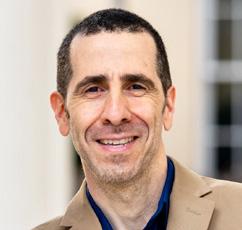
620 Sims Ave, Columbia 803-256-1000
• SCAcupuncture.com
Bill Skelton is dedicated to helping people live happier, healthier, active lives with safe, gentle and effective techniques. He has 38 years’ experience and trained in the Republic of China. Call to schedule an appointment. See ad, page 22.

AESTHETICS
EXPECT CLARITY AESTHETICS

Angie Jewell
120 Kaminer Way Pkwy, Ste G, Columbia 803-348-8962
Our carefully crafted and customized holistic care plans include Environ skin care products, which utilize science to deliver real skin benefits, paired with treatment room modalities, such as PBM, LFS, RF, microcurrent, facial/ear reflexology, facial sculpting massage, and gua sha, to help our clients reach their skin goals. Consistent and positive results include luminous, smooth, taut skin with even skin pigmentation. It’s time to expect clarity!
AROMATHERAPY
GARNER’S NATURAL LIFE
4840 Forest Dr, Ste 15-A, Columbia Trenholm Plaza, in Forest Acres 803-454-7700


• GarnersNaturalLife.com
Improve your level of stress, depression and mood with natural products from a locally owned family business. Our knowledgeable staff will guide you using aromatherapy for pain, anxiety, energy enhancement and more. We carry several brands of essential oils, including doTERRA. See ads, page 2, 15 and back page.
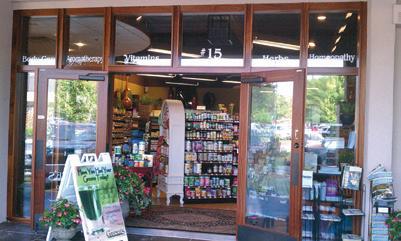
CHIROPRACTIC
CHIROPRACTIC WELLNESS
CENTER INC
Dr. Shelly Jones, DC

5209 Forest Dr, Ste C, Columbia

803-771-9990
• DrShellyJones.com
Webster Technique certified, Dr. Jones provides family chiropractic care, health information and wellness resources to support the body’s natural ability to heal, allowing one to feel better and enjoy living a more active lifestyle! Call to schedule your appointment or discuss bringing our onsite chiropractic care and health-education services to your business, school or athletic team.
CHIROPRACTIC
DOWDY RUDOLPH CHIROPRACTIC LLC
Dr. Dowdy Rudolph, DC 1444 Barnwell St, Columbia 803-376-6293 • DowdyRudolphChiro.com
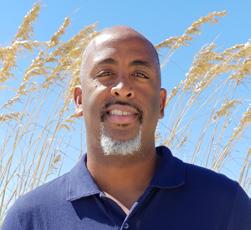
Dr. Gerald Rudolph, DC, focuses on finding the root cause of your problems and not just treating your pain. He utilizes digital X-rays to help diagnose problems, spinal adjustments to stimulate proper movement of spinal and extremity joints, active therapeutic movement exercises to correct movement disorders, and spinal decompression to help relieve numbness and tingling down your arms and legs. Dowdy Rudolph Chiropractic also offers a state-of-the-art full-body lounge hydromassage table that can help you feel more rejuvenated and relaxed. See ad, page 24.
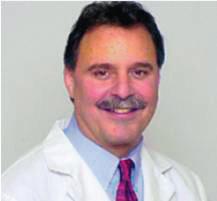
COLON HEALTH
SPRING RAIN HYDROTHERAPY
Linda Salyer



120 Kaminer Way Pkwy, Ste H, Columbia 803-361-2620 • LSalyer@ymail.com
All disease begins in the colon. Constipation; slow, sluggish bowel; gas and bloating? A colonic will help to rid you of these problems. Colonics promote good digestion, help speed metabolism, help lower cholesterol, and help relieve joint pain. Linda Salyer is IACN certified and a retired nurse. Saturday appointments available with an additional small convenience fee. See ad, page 38.
COUNSELING
THE COLLECTIVE CONSCIENCE
Charlie Ebert, MCPC 1824 Bull St, Columbia 803-250-5107
TheCollectiveConscience.biz
Are you struggling with priorities, relationships, anxiety or major life changes? Feeling stuck?
Charlie Ebert, a master certified professional coach, understands the frustration of feeling like there’s more out there for you, but not knowing from where. He’ll partner with you to help you discover the wellness education tools and resources that you need to feel happy, healthy and more than capable of managing life’s pressures. Call today for a free 30-minute discovery session. See ad, page 11.
HOLISTIC CBT LLC

Mark Stoll, LPC, NCC 2537 Gervais St, Columbia Mark@MarkStollTherapy.com

MarkStollTherapy.com
The pain of intrusive worry, fear and rumination can be overwhelming. Mark Stoll has been helping people with severe anxiety and depression for more than two decades by effectively integrating evidencebased therapies of mindfulness training, CBT, and acceptance and commitment therapy. You will learn effective strategies to free yourself from the prison of your mind so you can begin enjoying life again.
ECO-RICH SKIN CARE PRODUCTS
JUST WANNA MELT LLC
Misty Rawls • 803-331-0063
Info@JustWannaMelt.com
JustWannaMelt.com
A green skin care company that creates high-quality, non-GMO, all-natural products that are gentle to the skin and safer for the environment. Our brands include ingredients such as organic oils, butters, flowers, herbs, botanicals, local grains, beeswax and honey. Find our products at such stores as Garner’s Natural Life, Four Oaks Farm, Wingard’s Nursery, Whole Foods and more. For a complete list of retail locations, visit our website.
HEALTH & WELLNESS
ABOUT YOUR HEALTH INC

120 Kaminer Way Pkwy, Ste J, Columbia 803-798-8687 • AboutYourHealthSC.com
Our main focus is health ed ucation and health-enhancing services. One-on-one nutritional counseling, Mild Hyperbaric Ox ygen Therapy, Reams pH testing, parasite programs, aqua-chi footbaths, far infrared sauna, weight-loss programs, and thermography. Hard-to-find natural, organic, whole food nutritional supplements, raw foods and natural household items. See ad, page 39.
ORIGINAL ORIGINS HEALTH AND WELLNESS
Tracy R. Jacox • 833-678-7229
OriginalOriginshw@gmail.com
OriginalOriginshw.com
Ms. Tracy has over 30 years of experience in the medical field. The mission of Original Origins Health and Wellness is to educate, equip and empower the community to adopt a predominately whole food, plant-based lifestyle, which will improve and optimize your quality of life, health and wellness while preventing, delaying, reversing or eliminating chronic illnesses. Original Origins can assist you with maximizing your health and wellness holistically! Our wide range of services include health coach partnering, comprehensive health evaluations, comprehensive cooking experiences, and a comprehensive kitchen evaluation. Your health is your wealth! See ad, page 27.
37November 2022
natural
Connect with us naturally!
HOLISTIC WELLNESS
NATURAL BEING HOLISTIC WELLNESS SPA & CENTER
540 St. Andrews Rd, Ste 216-A, Columbia 803-708-8612 • nbhwsc.com
We are a very unique health and wellness center designed to help you discover a more natural and healthier way of living. Are you in need of a total detox? Do you want to rid your body of toxins or need to lose inches and burn 300 calories in 30 minutes? If you answered “yes” to these questions, then come embark on a healthy journey with us! Our extensive list of professional services includes foot detoxing, infrared sauna body wrapping, vaginal/yoni steaming, and vaginal rejuvenation. Owner and operator Sherino L. Maple is now offering complimentary consultations. Call today to book a consultation. See ad, page 5.
INTEGRATIVE & HOLISTIC MEDICINE
EXPECT WELLNESS
Dr. Rachel Hall
130 Suber Rd, Columbia 803-796-1702 • DrRachelHall.com

ExpectWellness@sc.rr.com
Find us on Facebook for great health tips. Integrative/Holistic medicine consults for anyone wanting to approach their health more naturally. Dr. Rachel Hall is board certified in both family medicine and integrative holistic medicine. Together we will focus on finding the root of the problem, not just treating symptoms. Call today for a consult if you are looking to achieve balance. In-house diagnostic labs and therapies. See ad, page 3.
INSPIRED HEALTH
Dana Nairn, MD, FAIHM
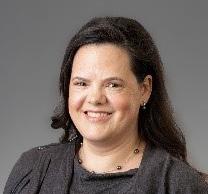
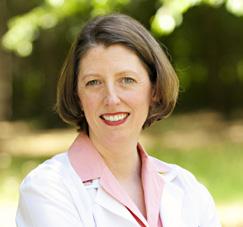
1931 Bull St, Ste C, Columbia 839-200-7822
Are you ready to take charge of your health? Dr. Dana Nairn is a fellow of the Academy of Integrative Health and Medicine and board certified in integrative holistic medicine and internal medicine. Dr. Nairn is excited and looking forward to partnering with you on your journey to becoming the best version of yourself. Call today to schedule a consultation! See ad, page 8.
LOCAL RETREAT
JOY LEE CONNOR, LMT (SC#1229)
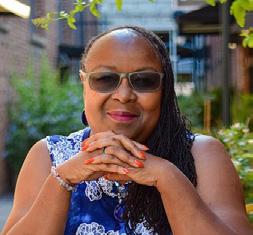
Healing Minster at Springhill AtONEment Center 803-447-6499

Retreat to the trees! Come and experience 100 beautiful acres near Chapin, South Carolina. Joy Lee Connor invites you to bathe in the forest and “ground” in the peaceful fields of Earth. Breathe in love, heal your mind, and nurture your spirit. We are often overwhelmed by body pains and emotions. Experience mind and body transformation while being loved, forgiven and released. Your energy field will be restored and balanced, allowing you to feel lighter and burdenfree. Joy offers instruction in reiki, Touch for Health, meditation, yoga, meridian movement, and selfcare—both online and in person. Private or small groups are available. Call Joy today!
MASSAGE
BODYWORX TRAINING AND RECOVERY
Traci Brock, LMT-SC #12586

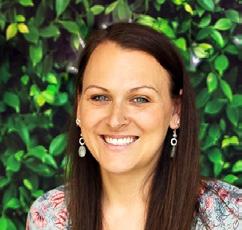

806 12th St, West Columbia 352-362-7534
BodyWorxTrainingAndRecovery.com
Traci Brock has more than 20 years in the health and fitness industry. She is a sports and medical massage practitioner, a certified personal trainer, a corrective exercise specialist, and a fitness instructor. At BodyWorx, she is not focused on just one area of a healthy lifestyle, but on all critical areas of fitness, recovery and nutrition. “My mission is to educate my clients and the community in becoming better versions of themselves by using exercise, nutrition and recovery as a health and wellness tool,” says Traci. Let Traci help you on your journey to optimal health and wellness. Call, text or email to make an appointment. “Solutions for moving better and feeling healthier.” See ad, page 11
NATURAL SOAPS
RAW ESSENCE NATURAL SOAPS & BATH CO LLC
9003 Two Notch Rd, Ste 12, Columbia 803-834-6576
Info@RawEssenceSoaps.com
RawEssenceSoaps.com
Raw Essence Natural Soaps & Bath Company LLC is a handcrafted line of soap and body care products homemade in Columbia that uses all-natural ingredients to make unique products for your lifestyle and home. Raw Essence makes products that are 100 percent handmade, and free of harmful chemicals and preservatives. We strive to use the highest quality, eco-friendly ingredients possible to create unique luxury soaps, lotions, sugar scrubs, body butters, candles, and other spa and natural skin care items that will nourish your body and delight your senses.
PHILANTHROPY
SISTERS EMPOWERING EACH OTHER
Pamela Johnson, President P.O. Box 212404, Columbia 803-521-3036 • seeo2018@gmail.com
Sisters Empowering Each Other (SEEO) is a nonprofit organization founded by Pamela Johnson. Our mission is to fundraise monies in order to provide new fullsized personal hygiene packages to women who are homeless and/or abused. The women and children included may reside in shelters or transitional homes. SEEO motto: Being a Servant for the Lord. Ways to donate: Cash app –$seeo20180; PayPal – seeo2018@gmail.com; or mail check to address above. Contact Johnson to volunteer.
PREGNANCY/LACTATION
GRACEFUL BEGINNINGS BIRTH
Lindsay Millwood, CD 404-314-0363
• GracefulBeginningsBirth. com
As your doula, my goal is to provide you and your partner with the support, care, understanding and information you need throughout the birthing process. Beginning with natural birth education and assistance with birth plans through in-person prenatal appointments and birthing support, we will work together to achieve your birth goals. Postpartum services include lactation care as well as a functional assessment for ties and oral tethers. Birth photography is also available. See ad, page 9.
REIKI & WELLNESS
MARTA NATURALS REIKI AND WELLNESS
Martha Kirby, Reiki Master and Spiritual Life Coach

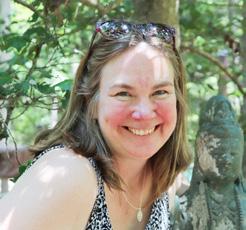
Columbia Area 803-864-6259
• MartaNaturals.com
Everything is energy, as are our thoughts. We give them life, bad or good. Everything you need is within you to change and transform those negative thoughts. Let me help you unlock those secrets to become the best version of you. We offer mobile and virtual sessions. Call today to schedule your session or free consultation. See ad, page 33.
SPIRITUAL
LIGHT IN THE DARKNESS
Justin Williams
803-467-8322
Justin.Williams2@gmail.com
Justin is an intuitive counselor and energy worker. He power cycles, overhauls and unblocks energy fields from afar to remove negativity from your life while jumpstarting your career, relationships, money and general blessings. Justin also provides distance house cleansings to produce a peaceful home and comfortable environment tailormade for abundance and success.

38 Columbia Edition ColumbiaNaturalAwakenings.com
UNITY OF COLUMBIA
1801 Legrand Rd 803-736-5766
• UnityColumbia.org
Unity is a positive, practical, progressive approach to Christianity based on the teachings of Jesus and the power of prayer. Unity honors the universal truths in all religions and respects each individual’s right to choose a spiritual path. Come join us for a Sunday worship celebration and meet some positive, uplifting people that live life abundantly. See ad, page 29.

THERMOGRAPHY



ABOUT YOUR HEALTH INC

120 Kaminer Way Pkwy, Ste J, Columbia 803-798-8687

• AboutYourHealthSC.com
Our main focus is health education and health-enhancing services. One-on-one nutritional counseling, Mild Hyperbaric Oxygen Therapy, Reams pH testing, parasite programs, aquachi footbaths, far infrared sauna, weight-loss programs, and thermography. Hardto-find natural, organic, whole food nutritional supplements, raw foods and natural household items. See ad, page 39.
VITAMINS
GARNER’S NATURAL LIFE
4840 Forest Dr, Ste 15a, Columbia 803-454-7700





• GarnersNaturalLife.com
At Garner’s Natural Life, we offer the purest, most innovative highquality natural products. With more than 130 collective years of wellness experience! Allows us to encourage your healthy choices. See ads, page 2, 15 and back page.


39November 2022 SPIRITUAL
& SUPPLEMENTS
Goodbye Junk. Hello Relief. 1-800-468-5865 | 1800gotjunk.com Trusted Junk Removal Since 1989 Services & Products to Help You Create a Health Full Life ABOUTYOURHEALTHSC.COM 120 KAMINER WAY PKWY, SUITE J COLUMBIA, SC 29210 Balance for Life About Your Health 803 798 8687 By measuring the rate, rhythm and tone of the heart, the nutritional needs of the heart can be discovered, thus highlighting a way to bring the heart back into balance. Heart Sound Recorder Service available at About Your Health. Find out more about The Heart Sound Recorder at ABOUTYOURHEALTHSC.COM Call to make your appointment: 803 798 8687

40 Columbia Edition ColumbiaNaturalAwakenings.com































































 by Kimberly B. Whittle
by Kimberly B. Whittle










 by Ronica O’Hara
by Ronica O’Hara








 by Randy Kambic
by Randy Kambic














































































































































































































































